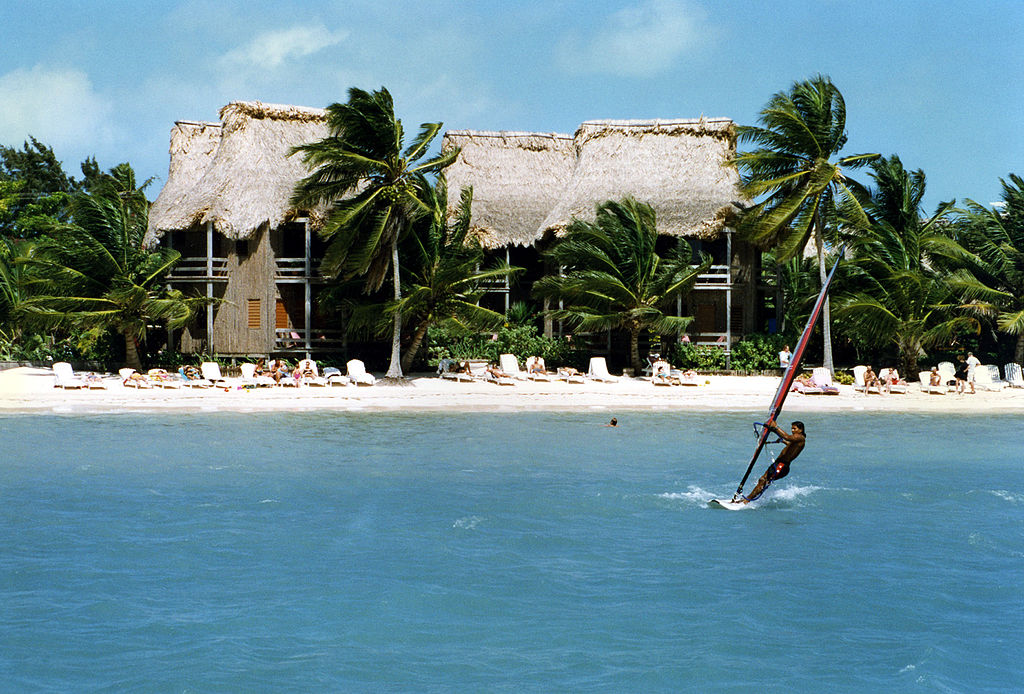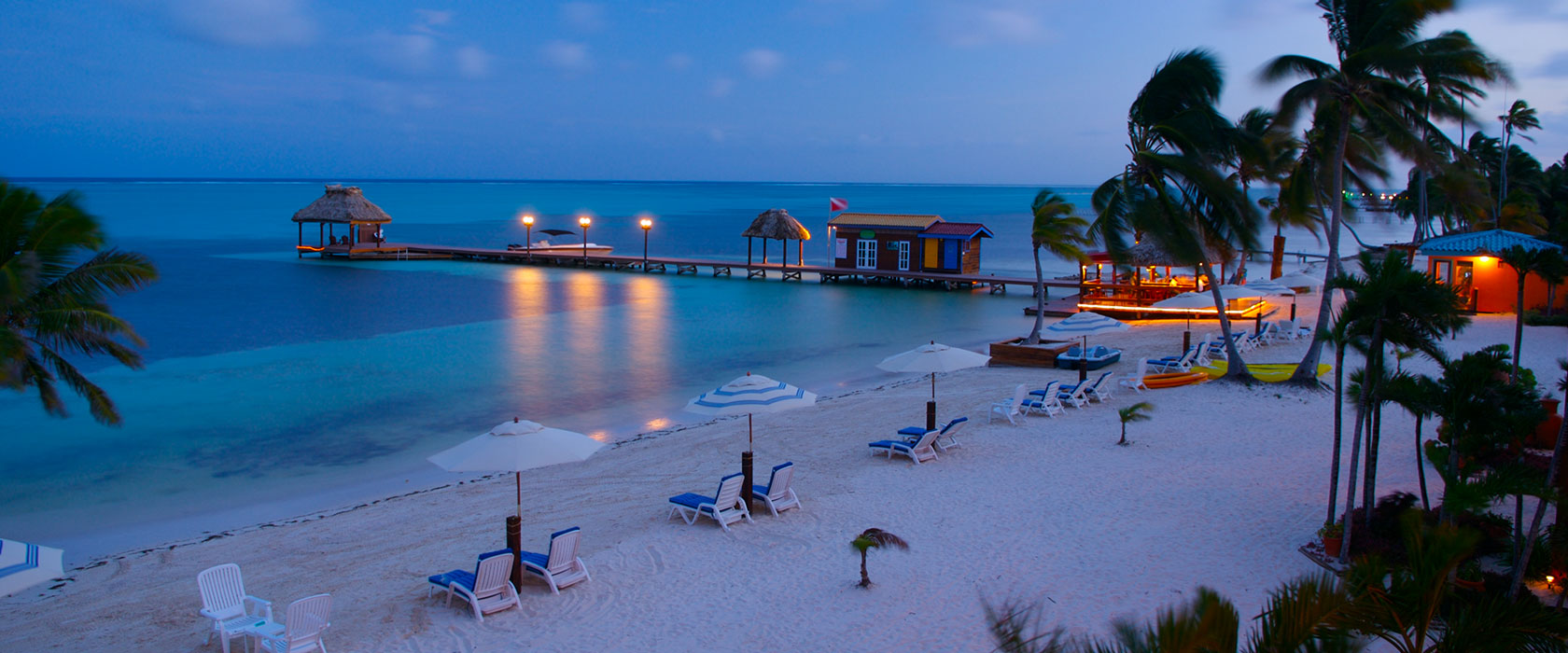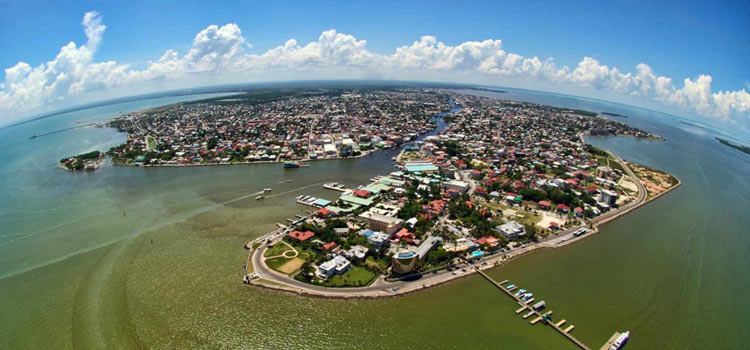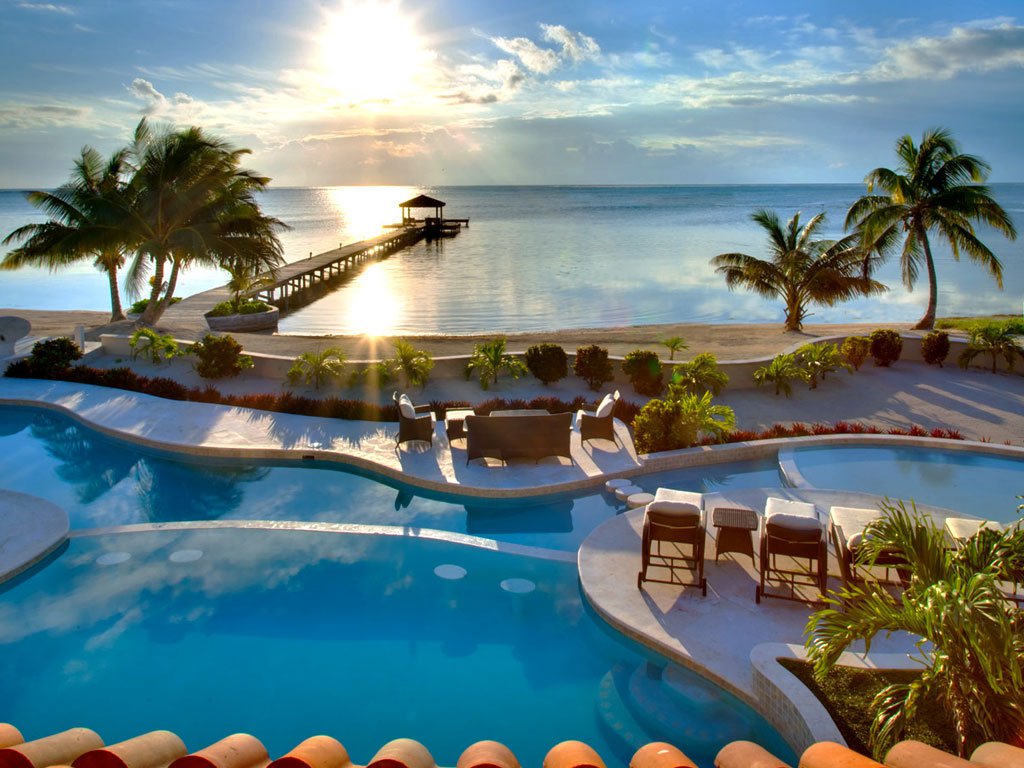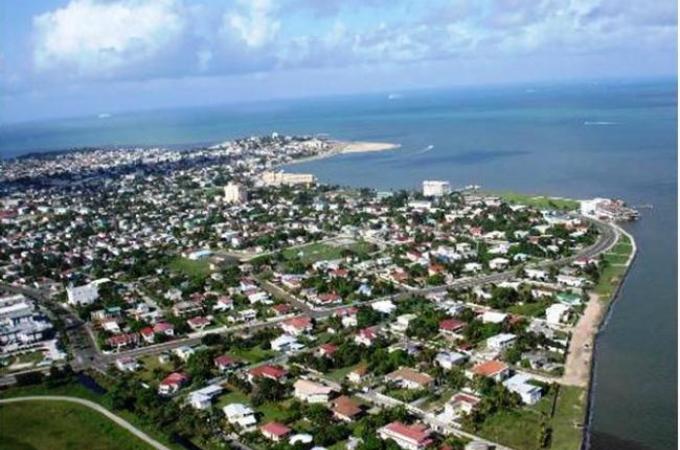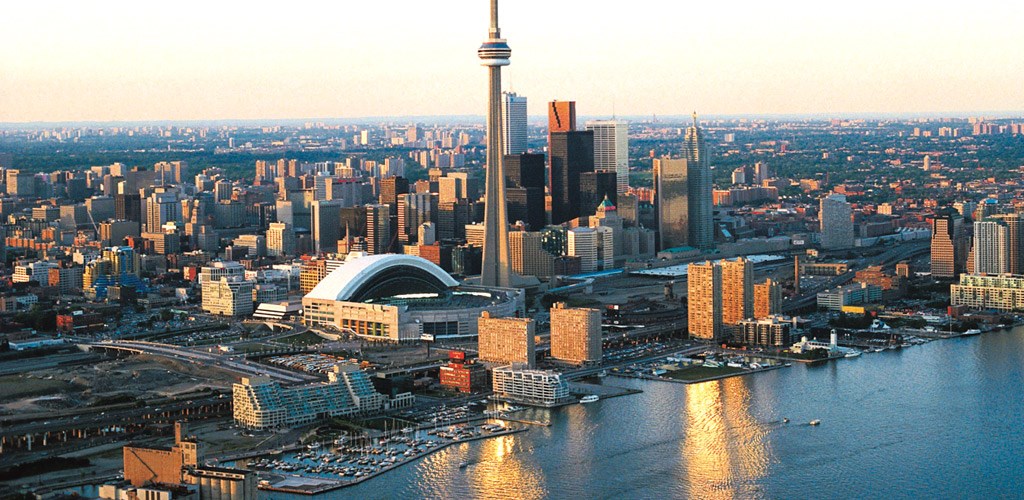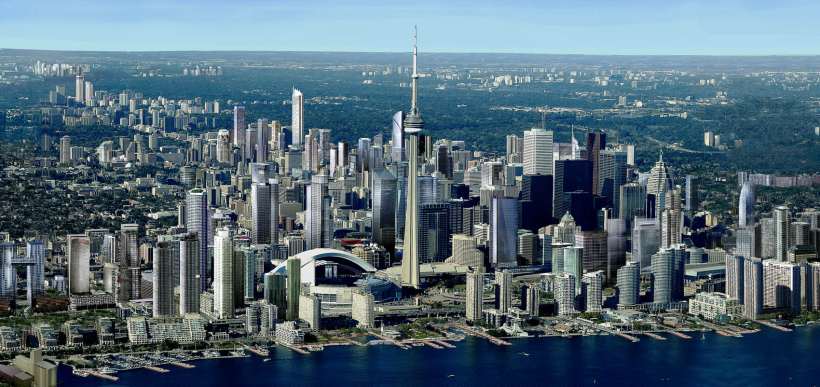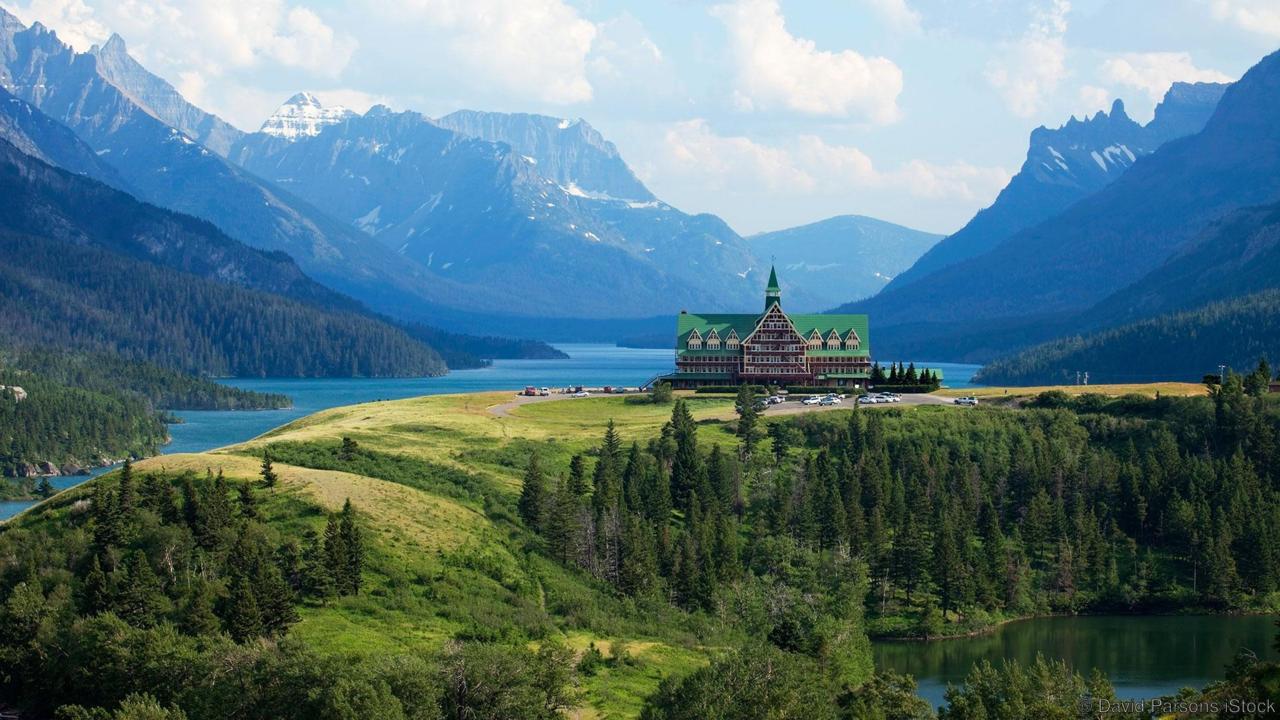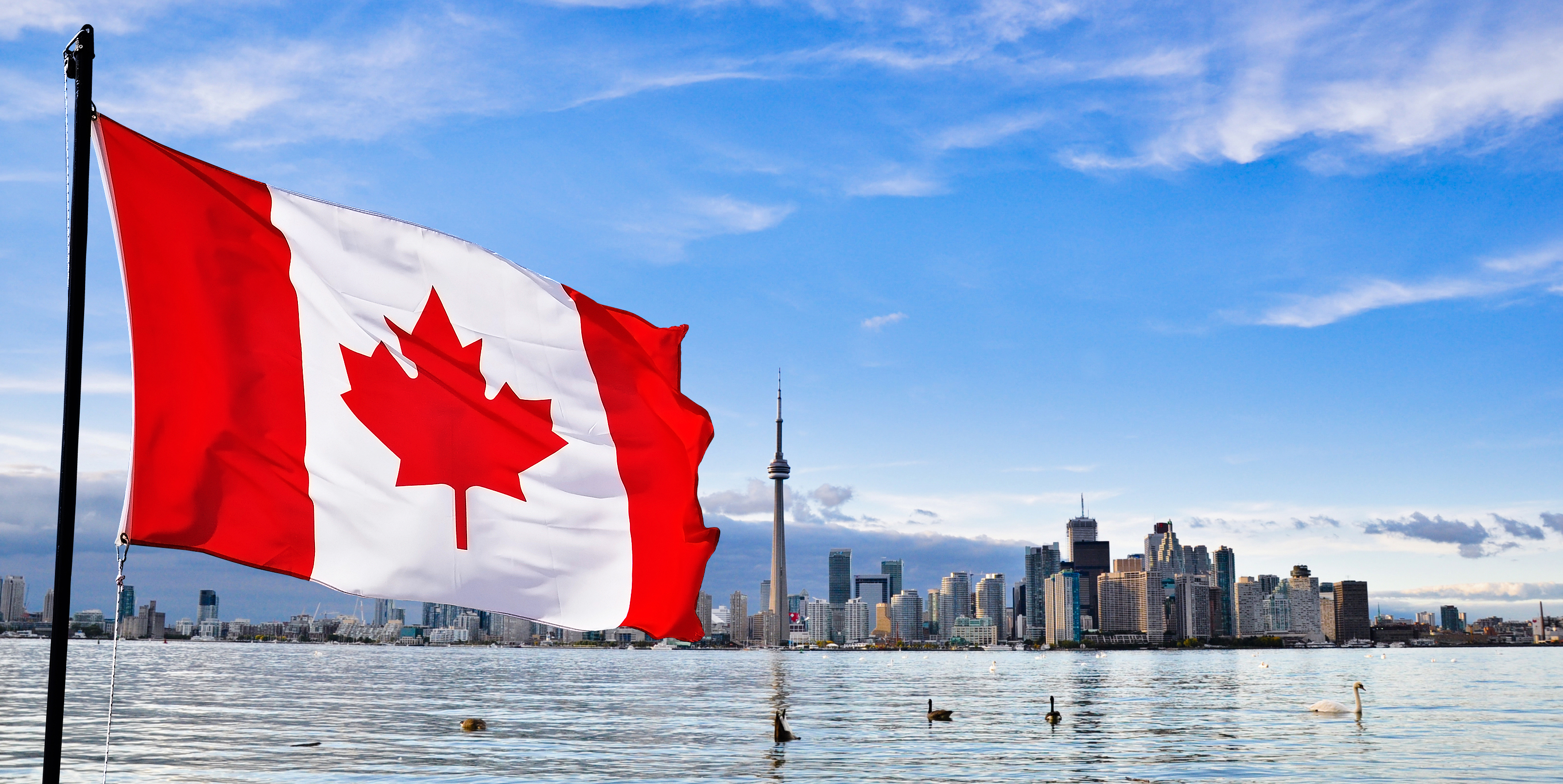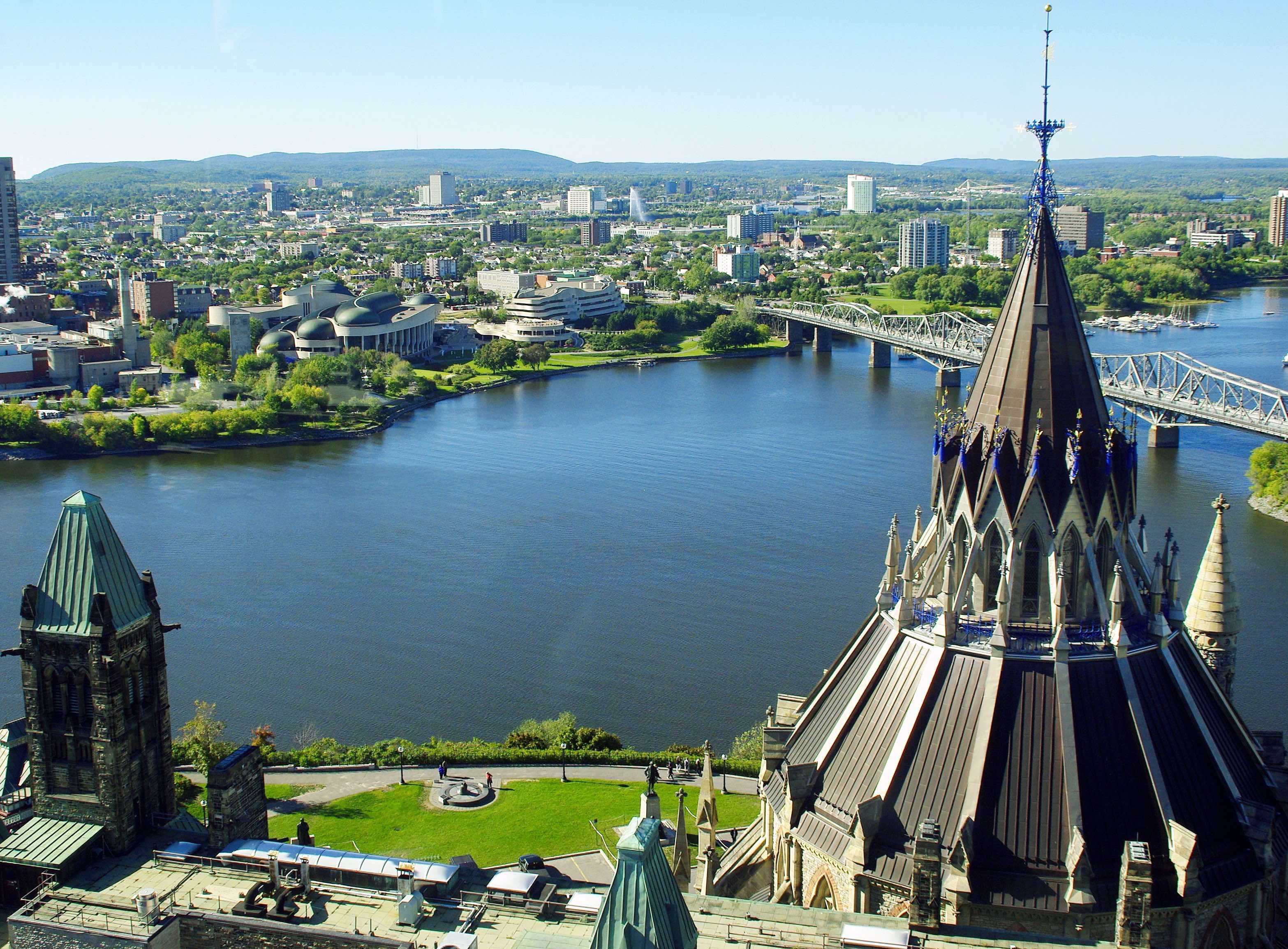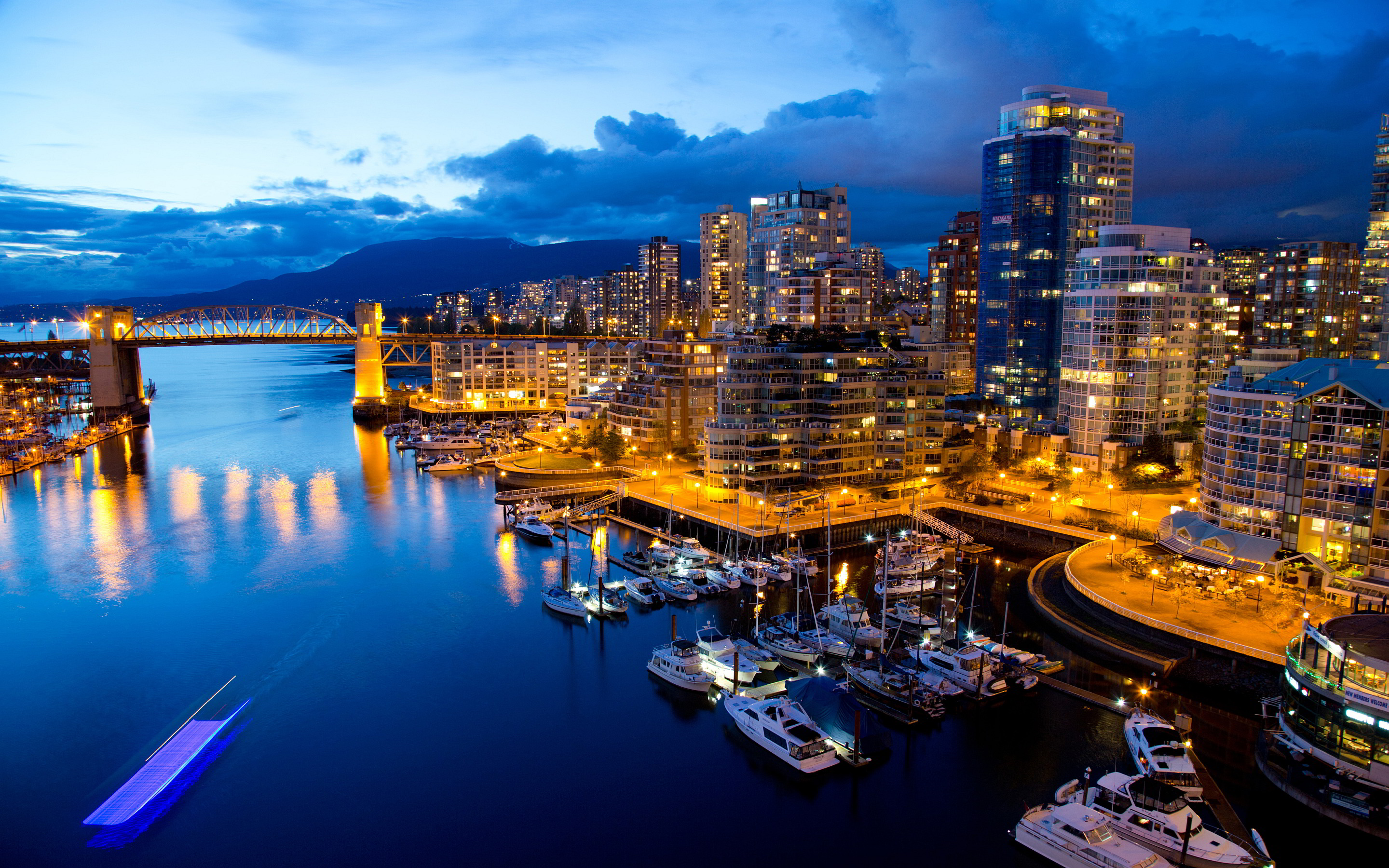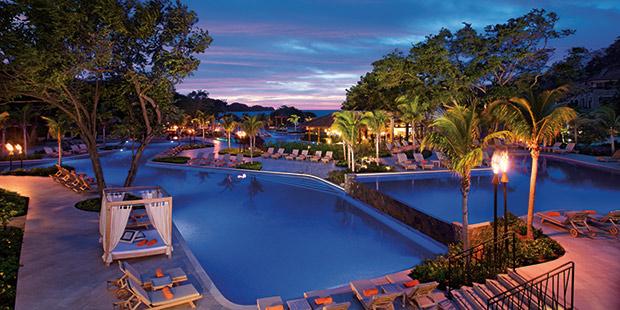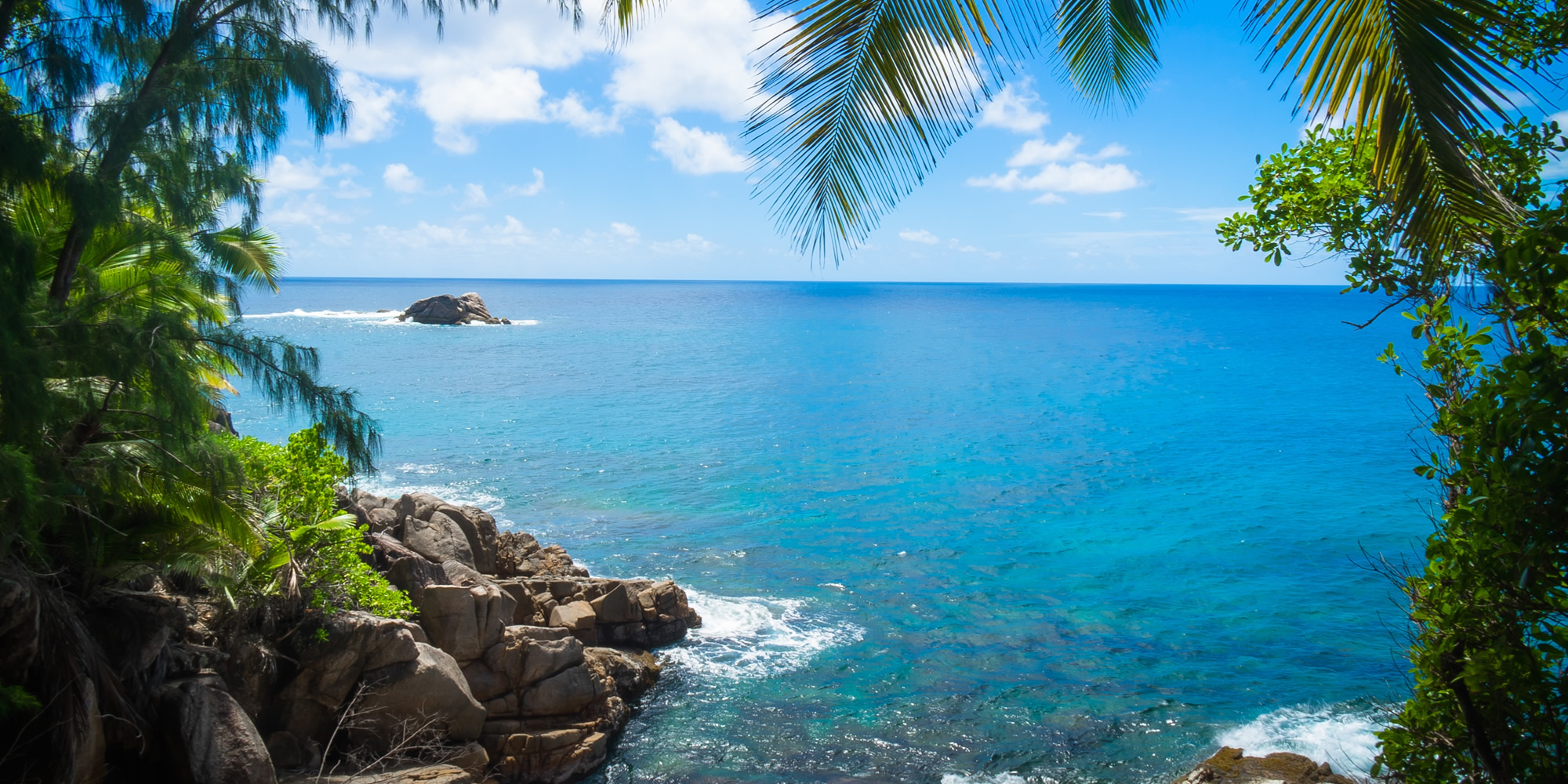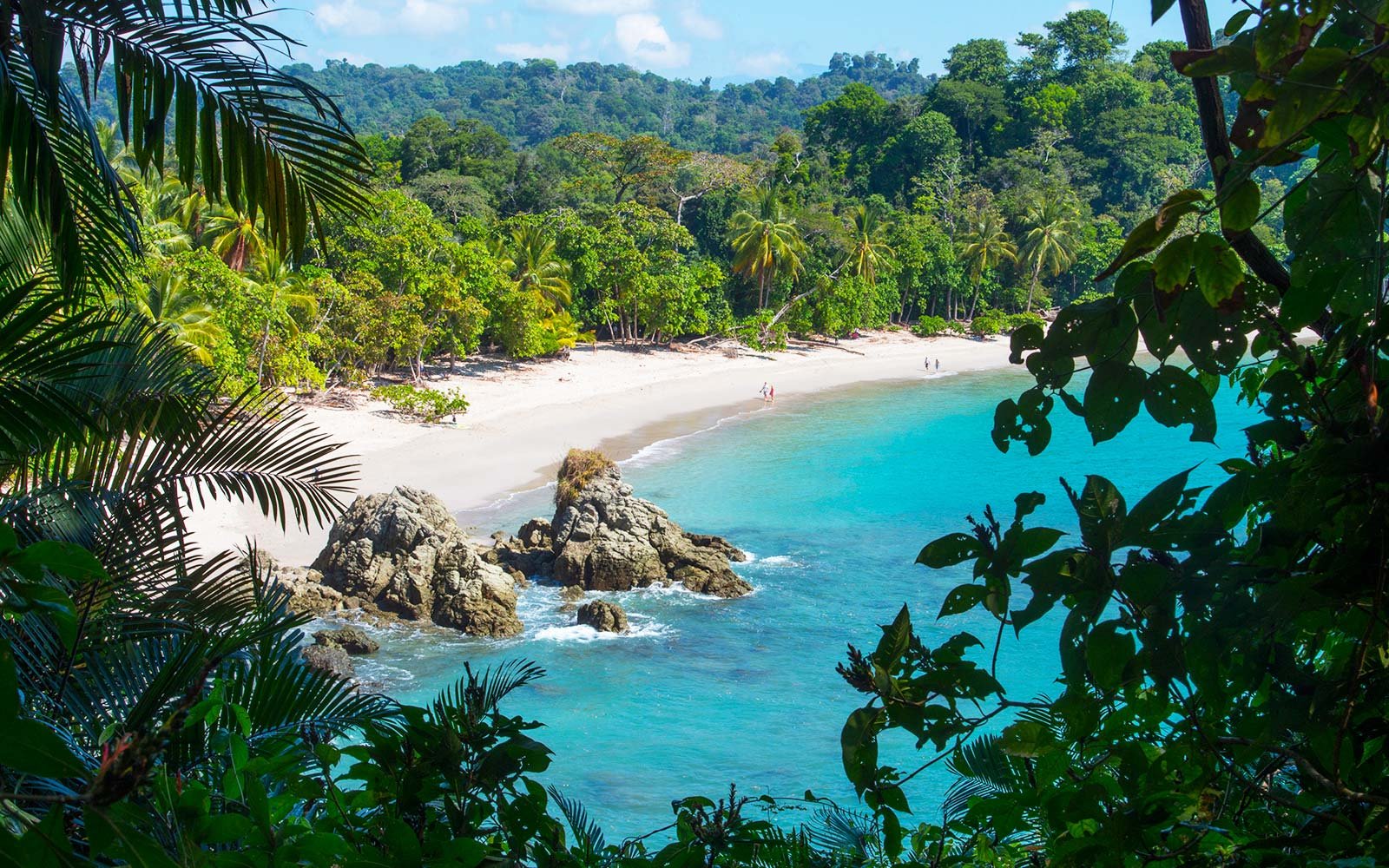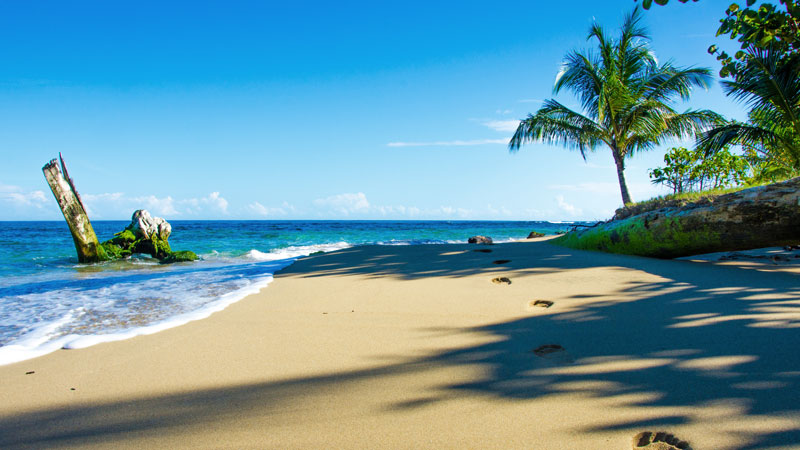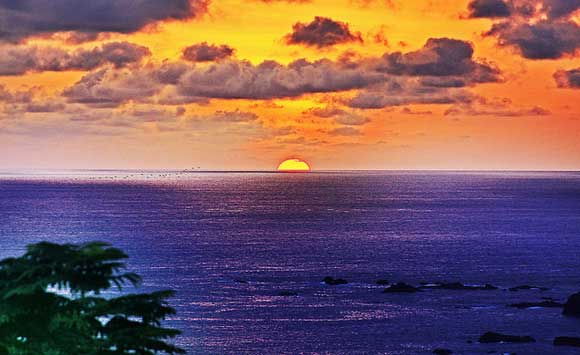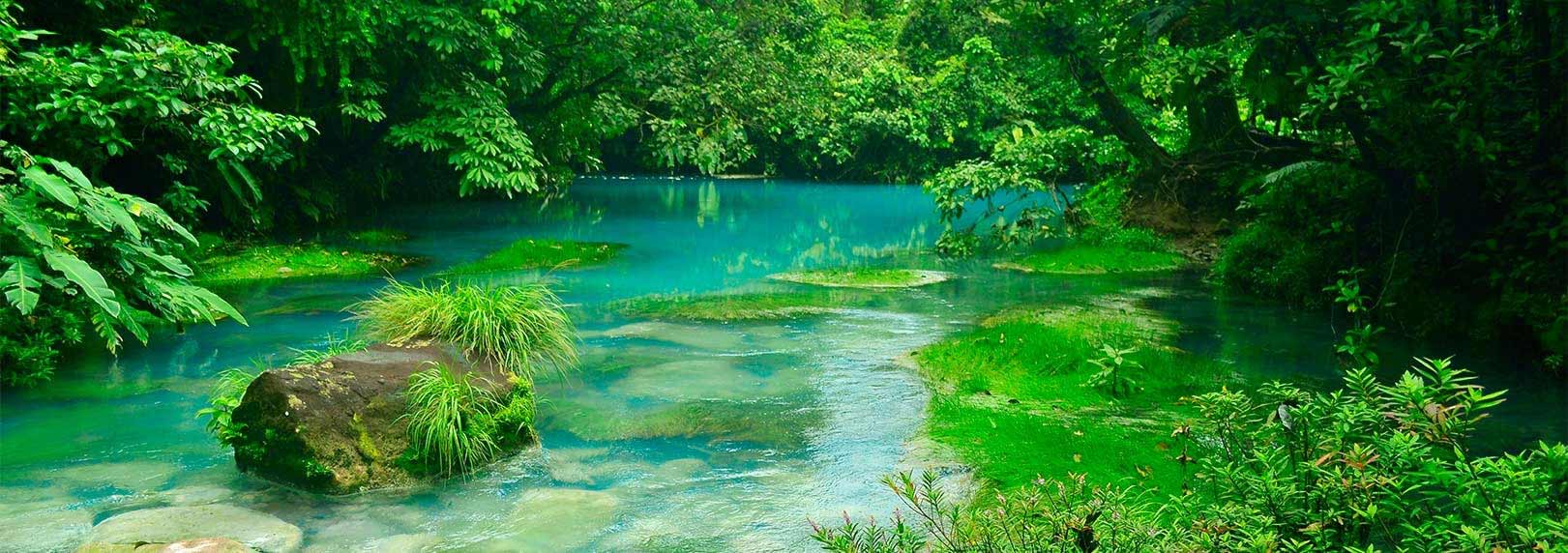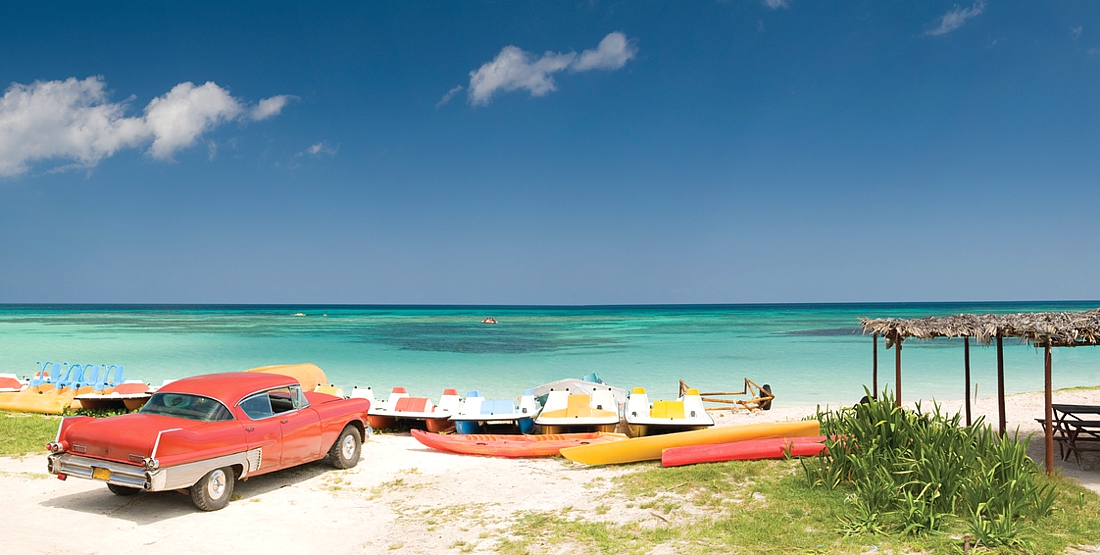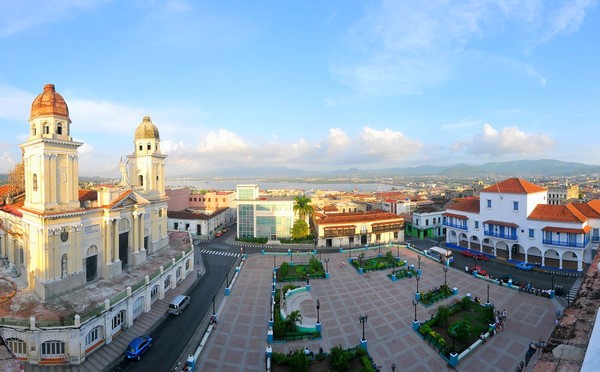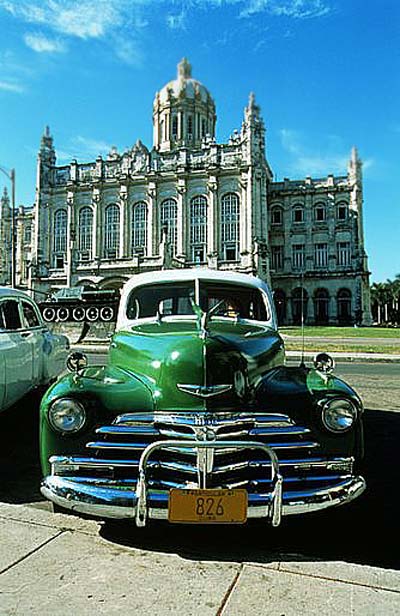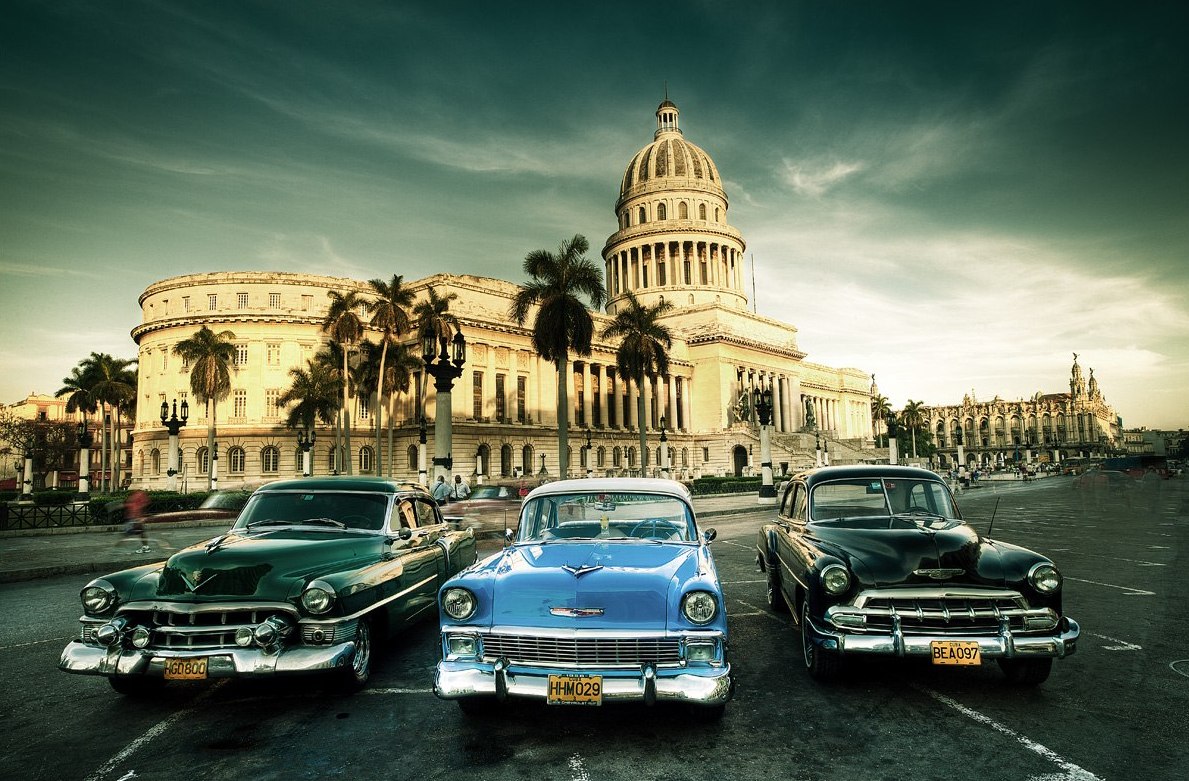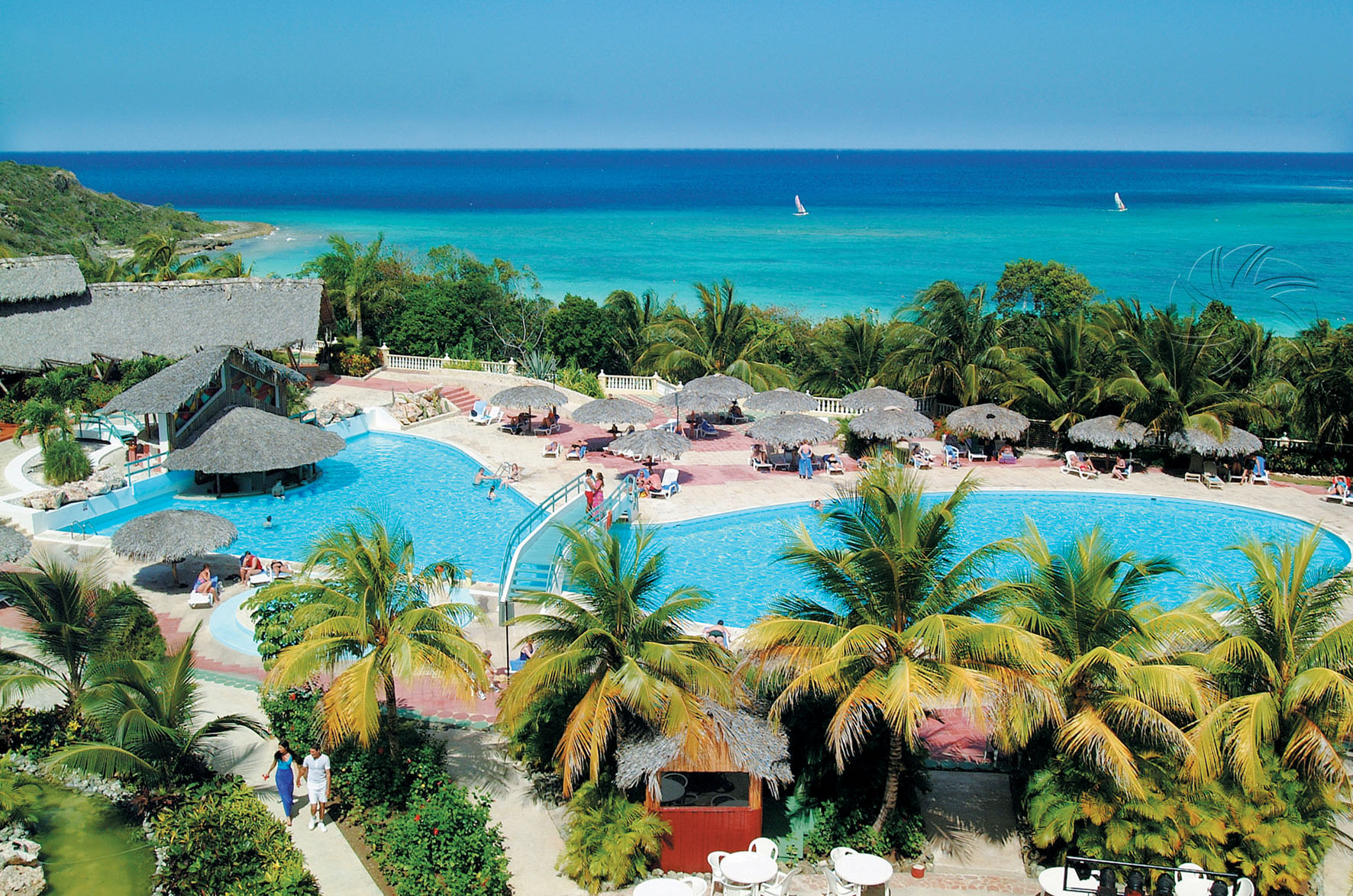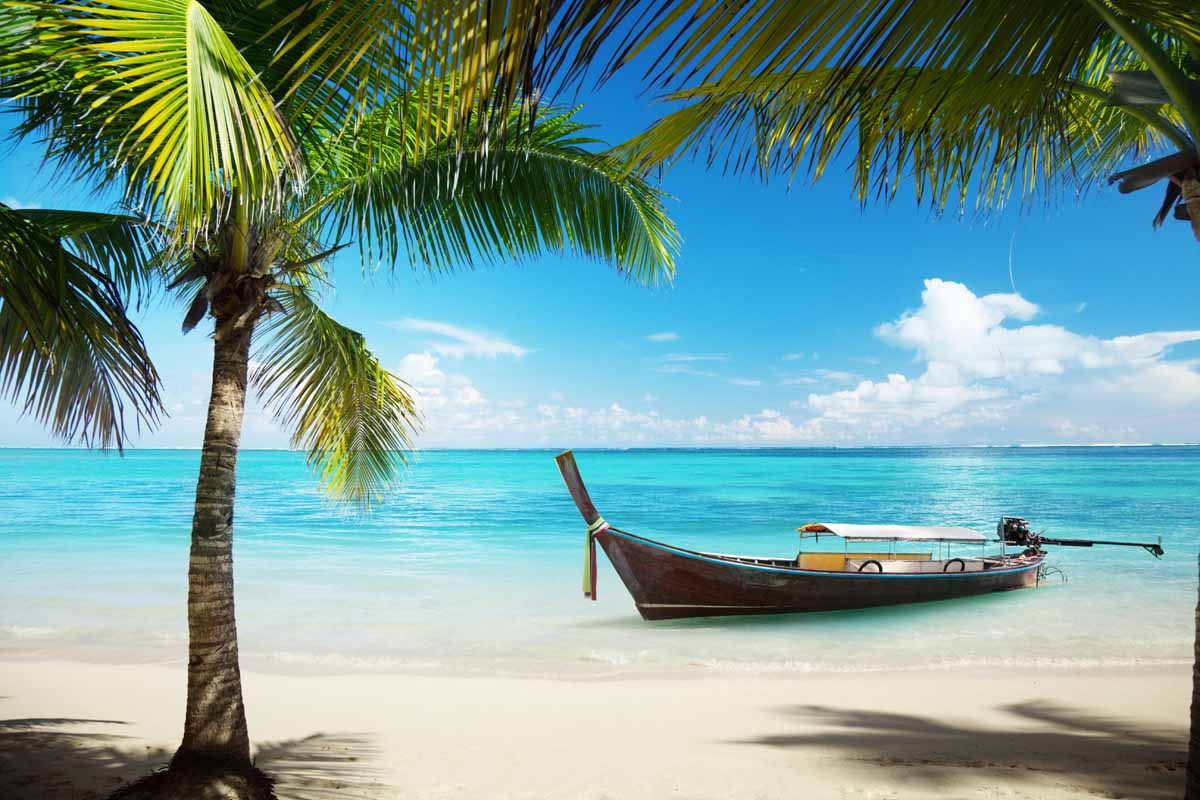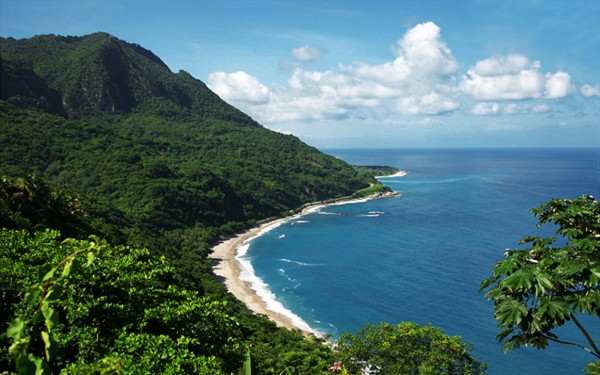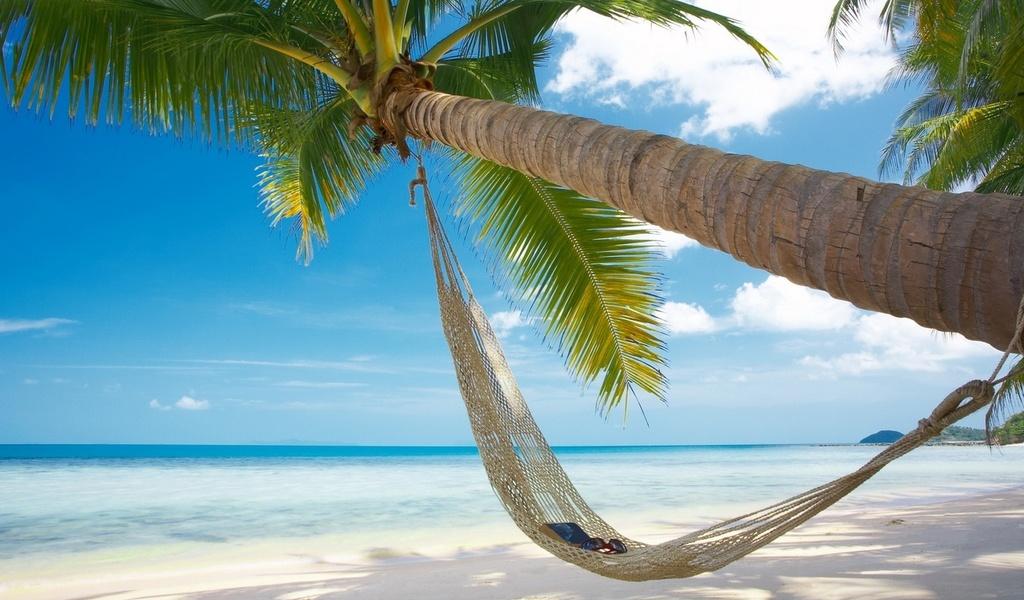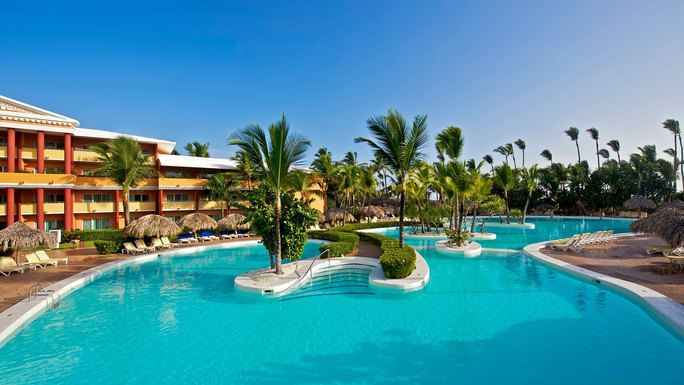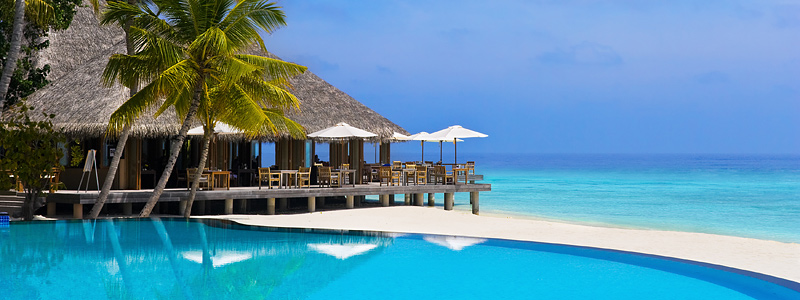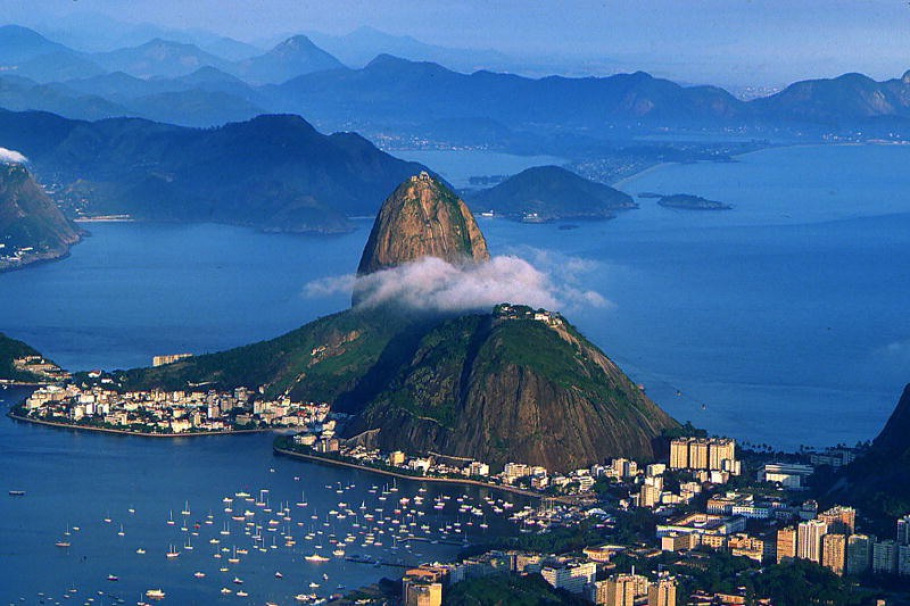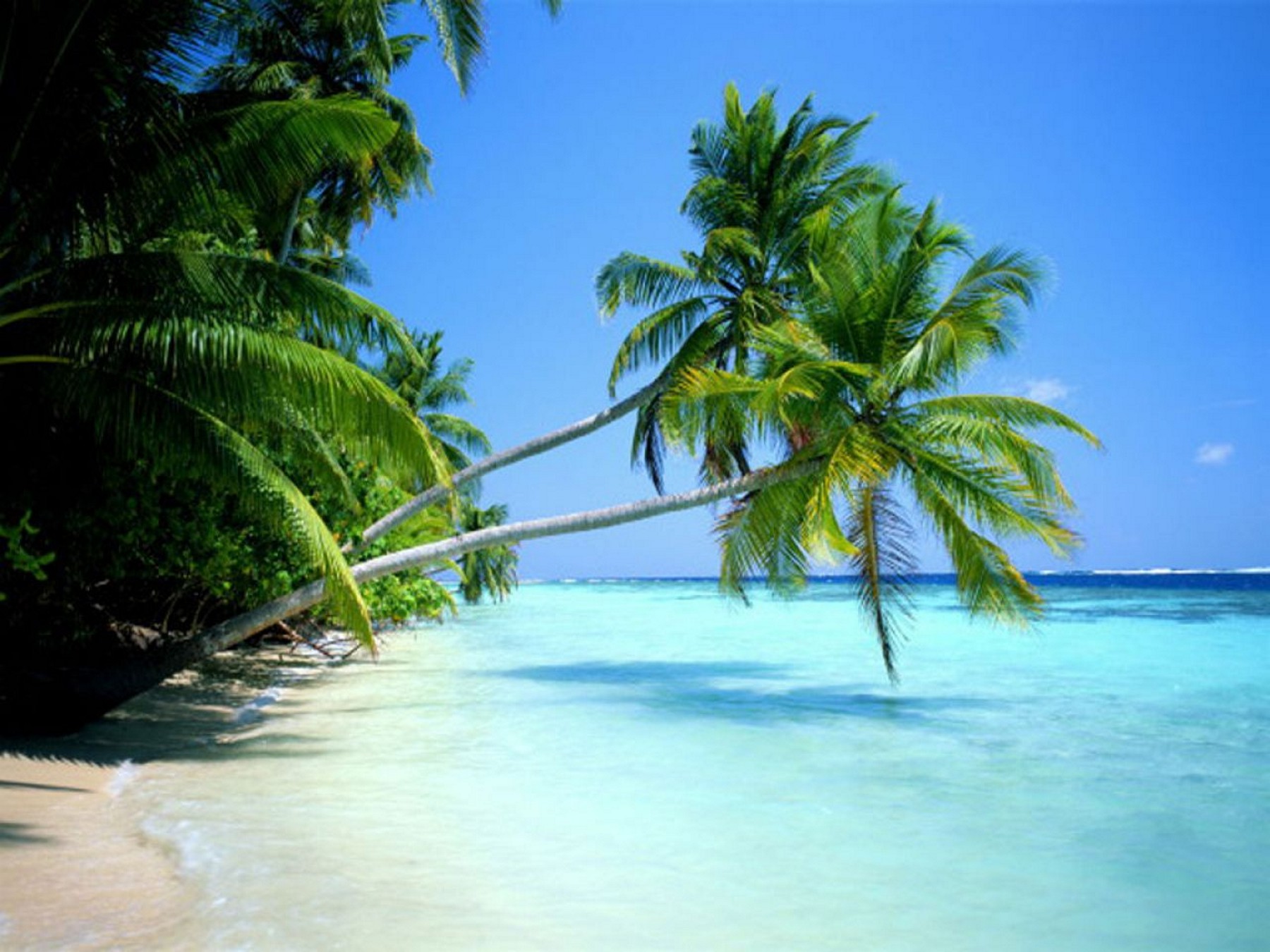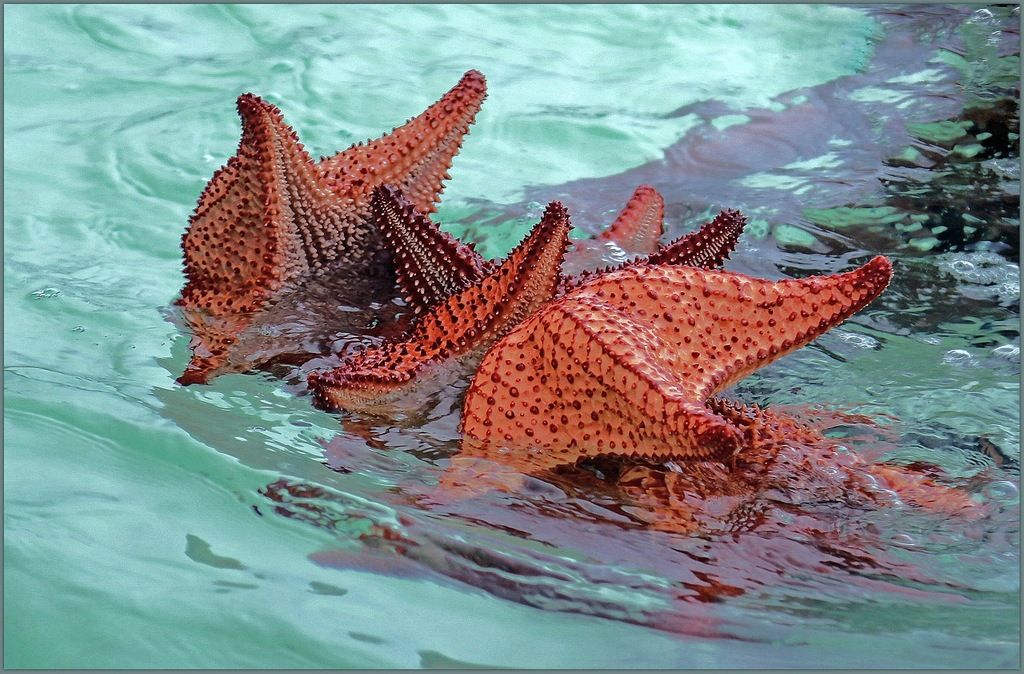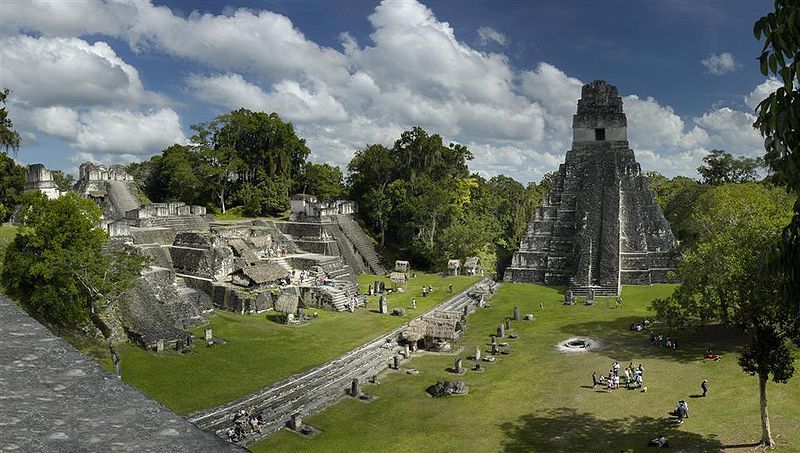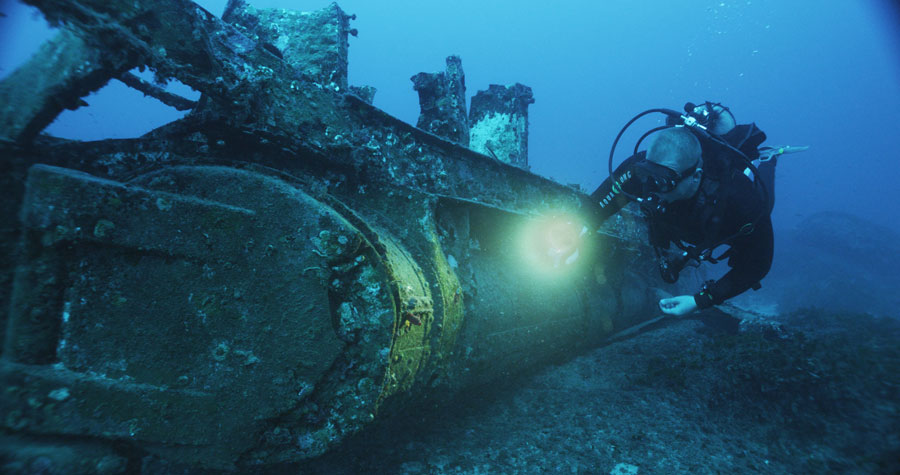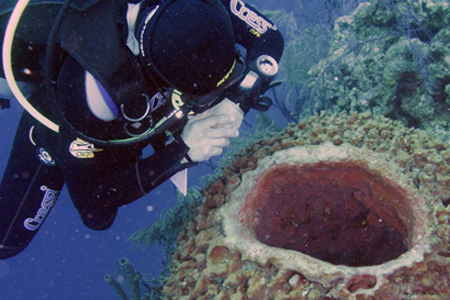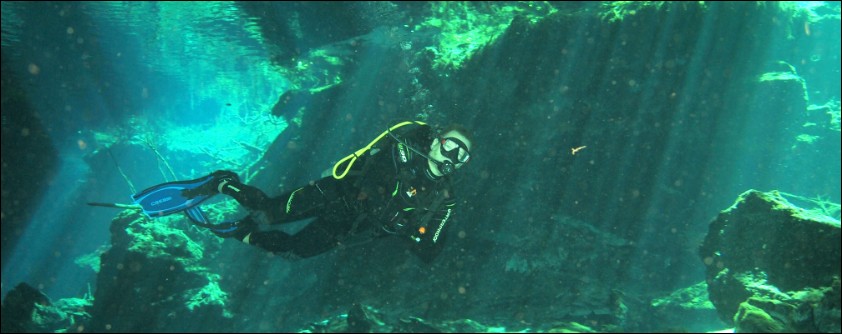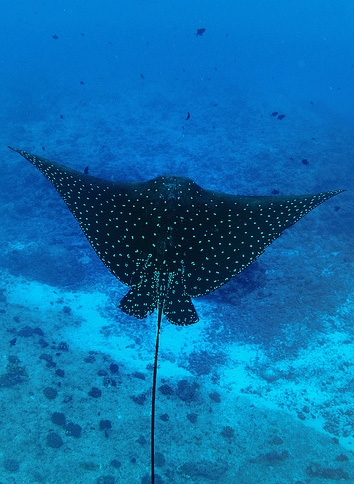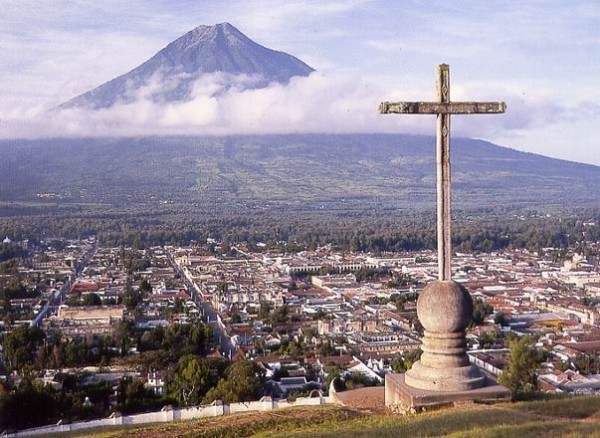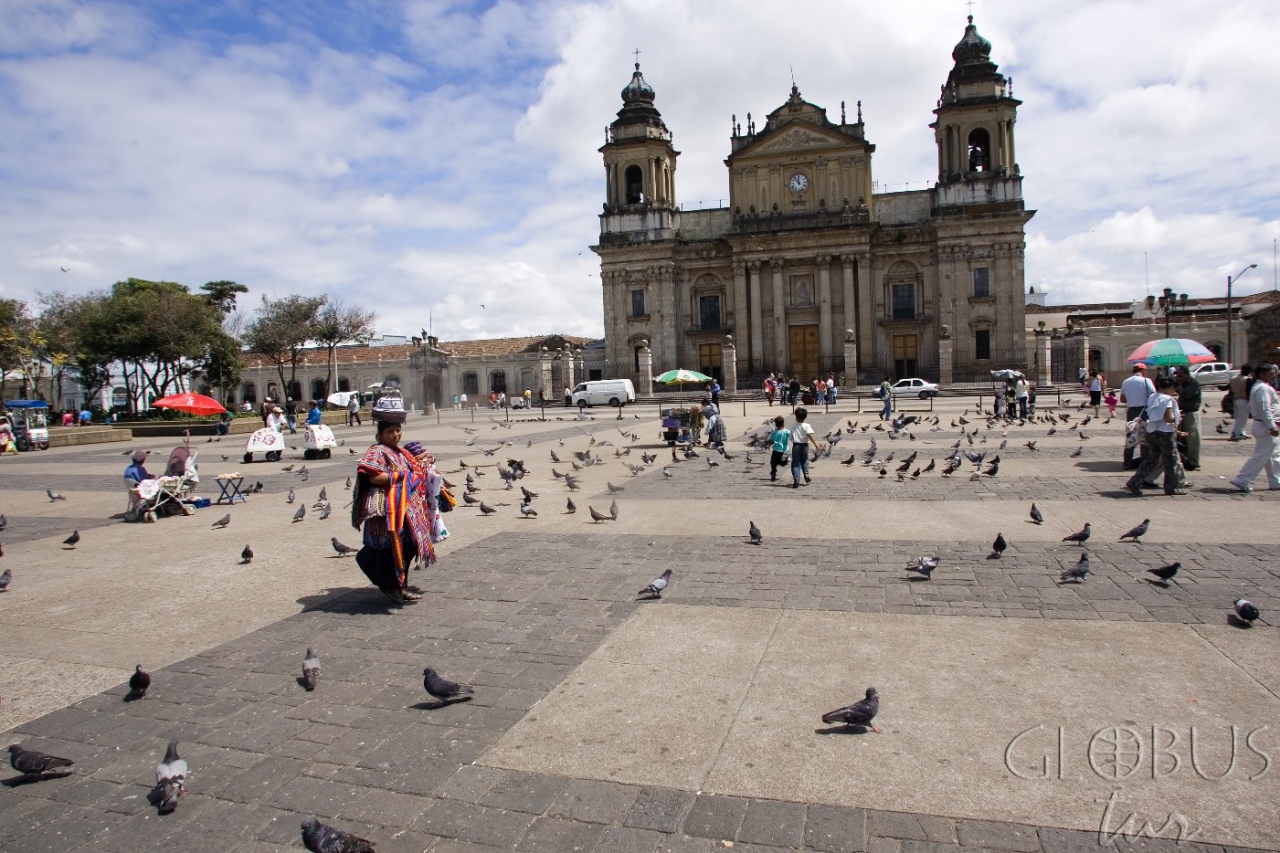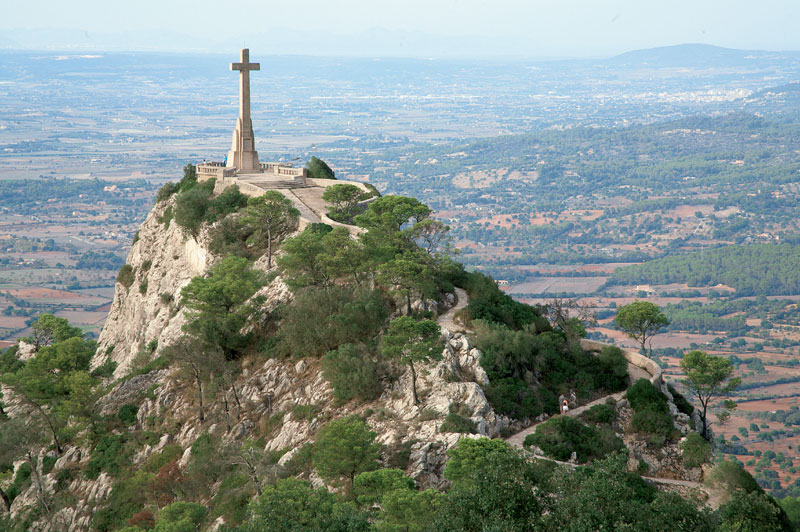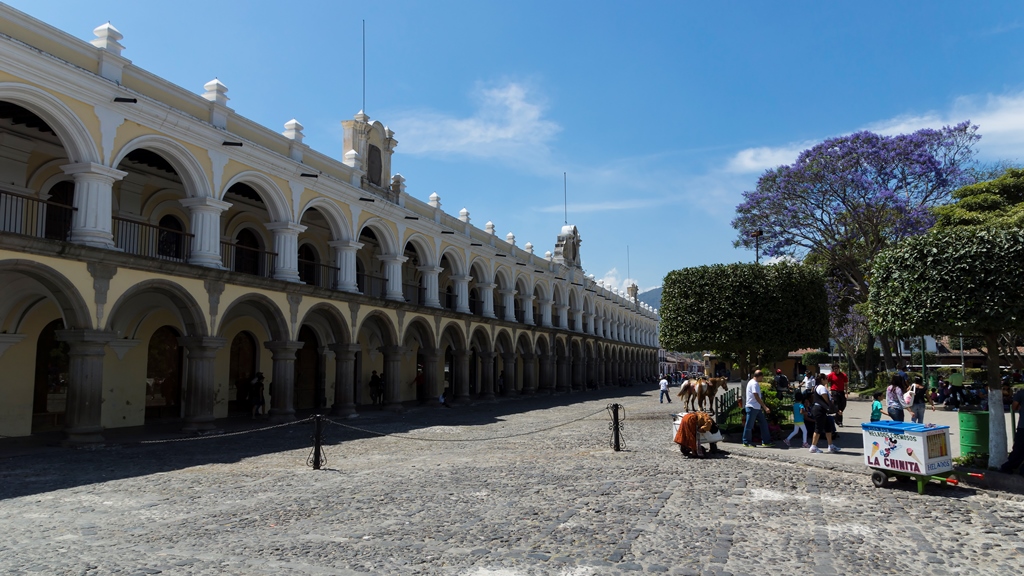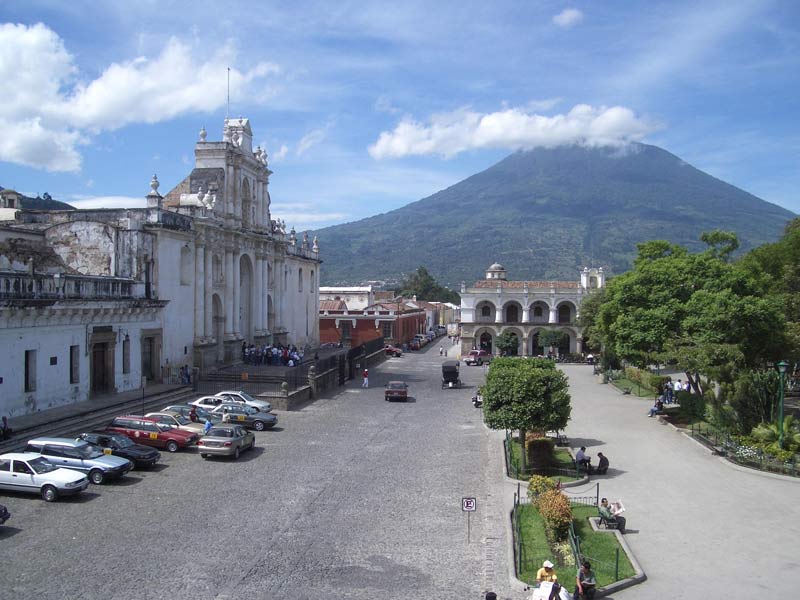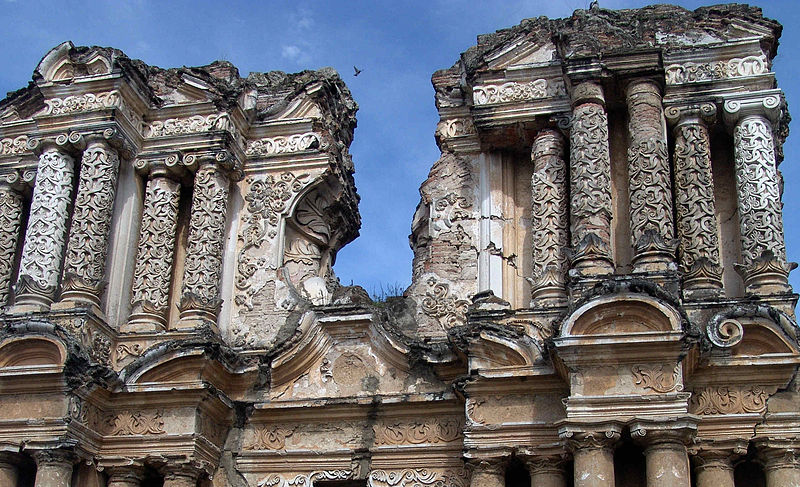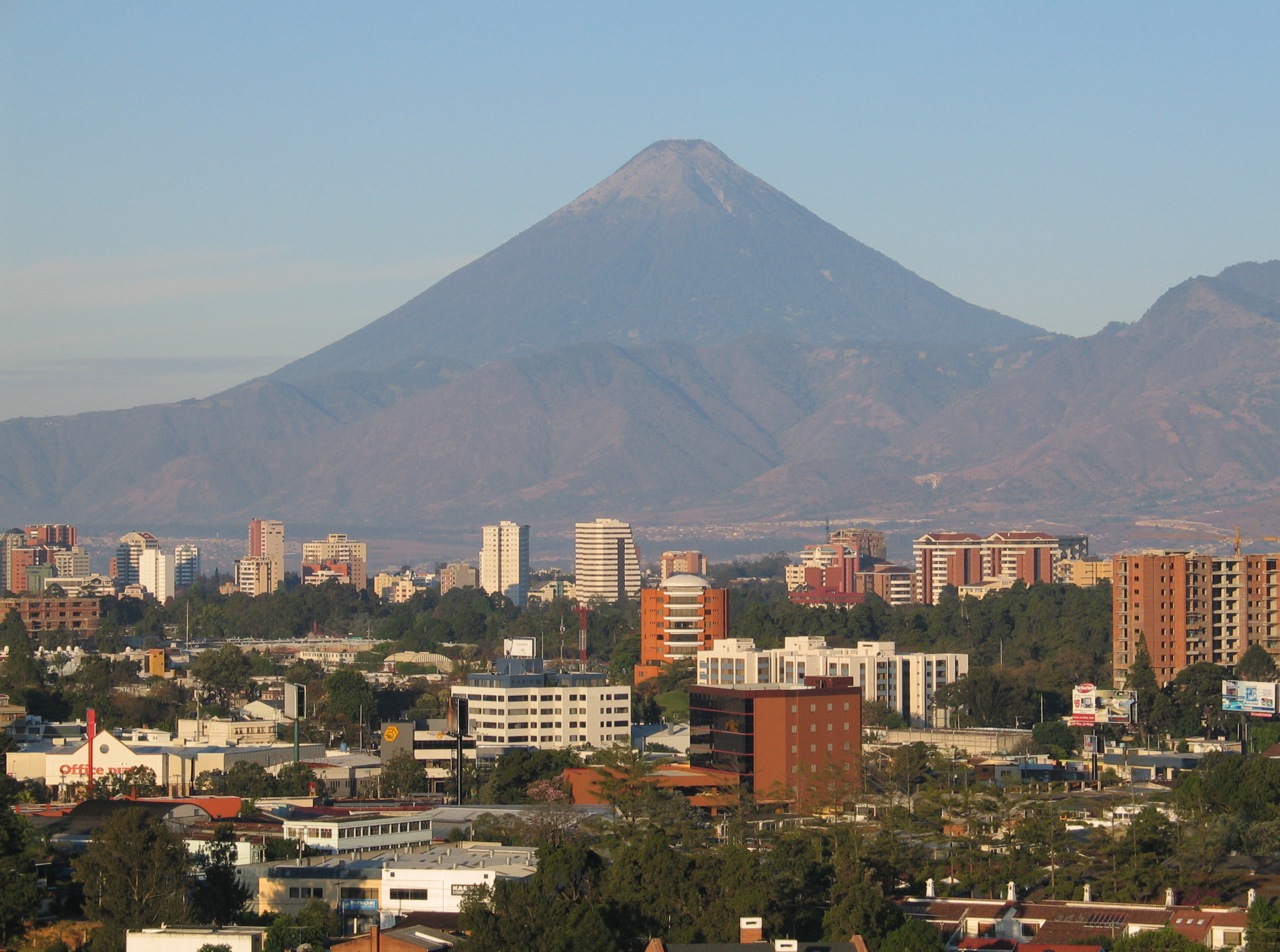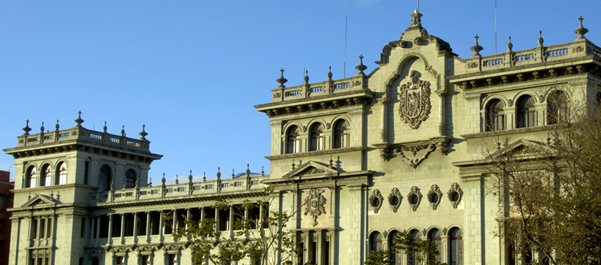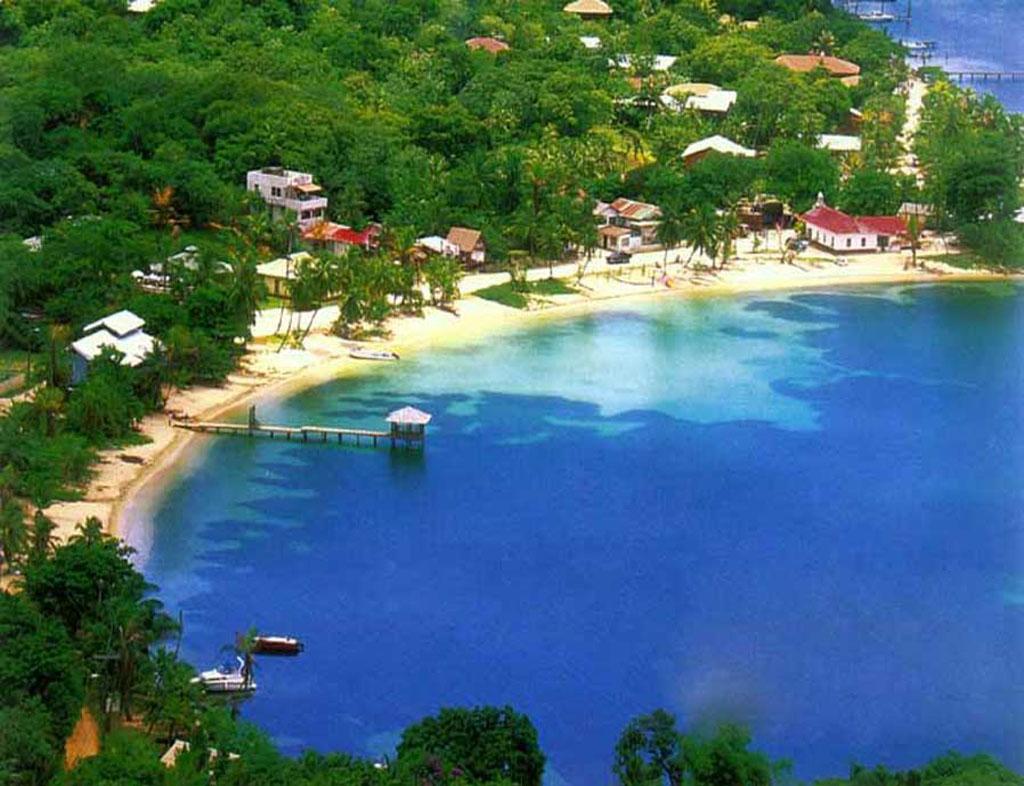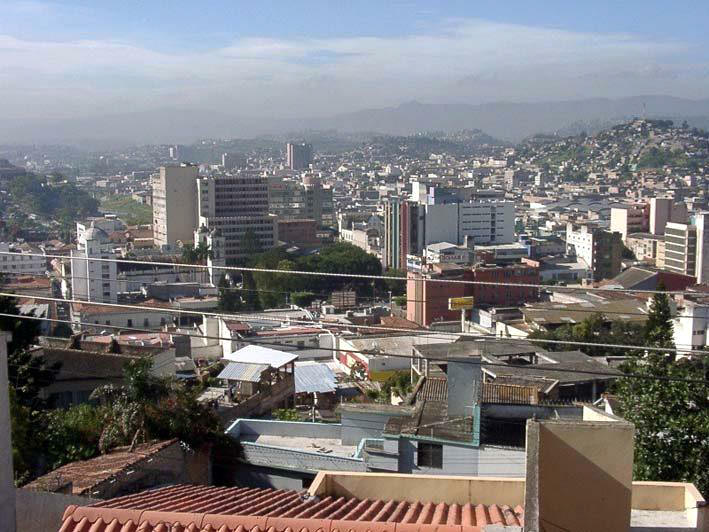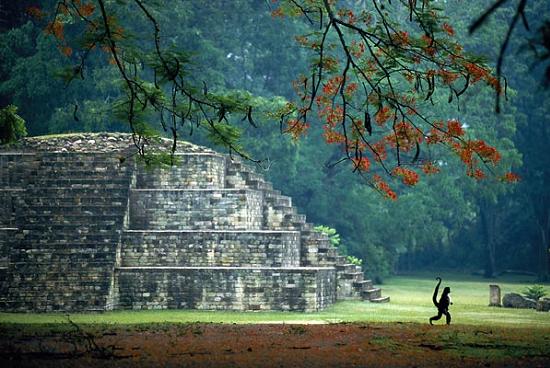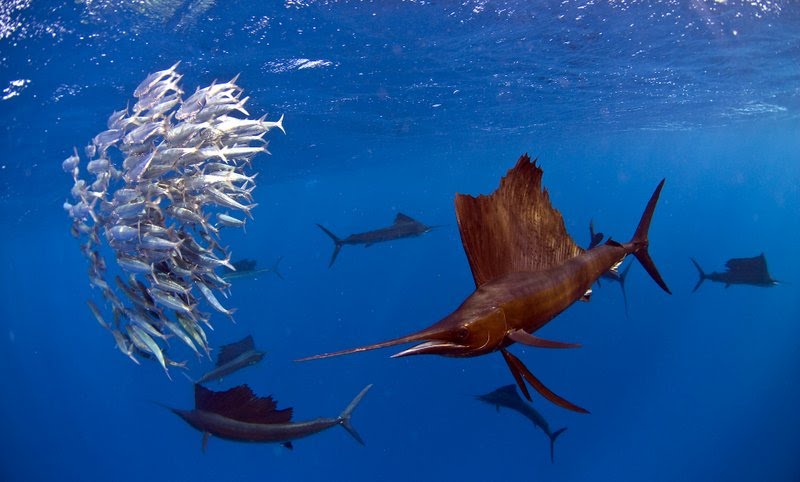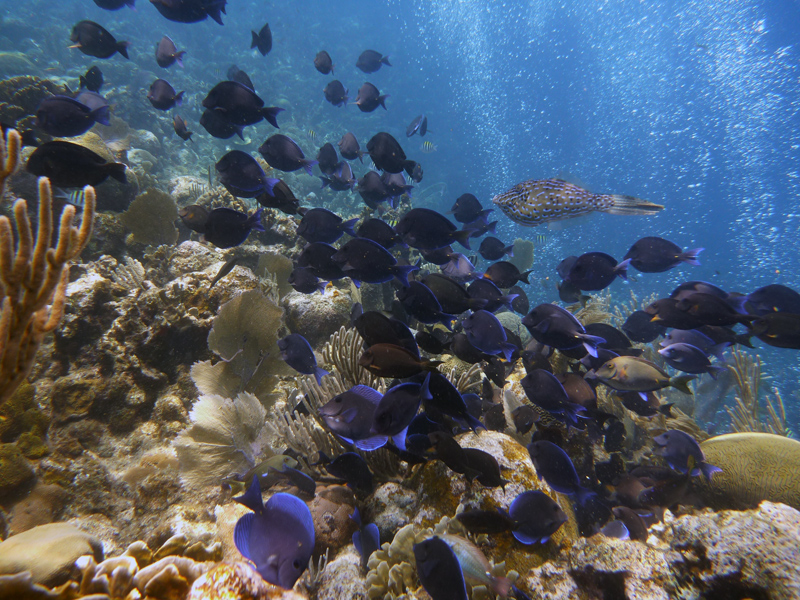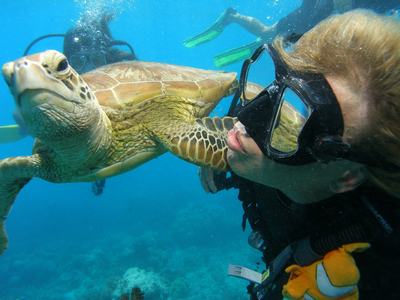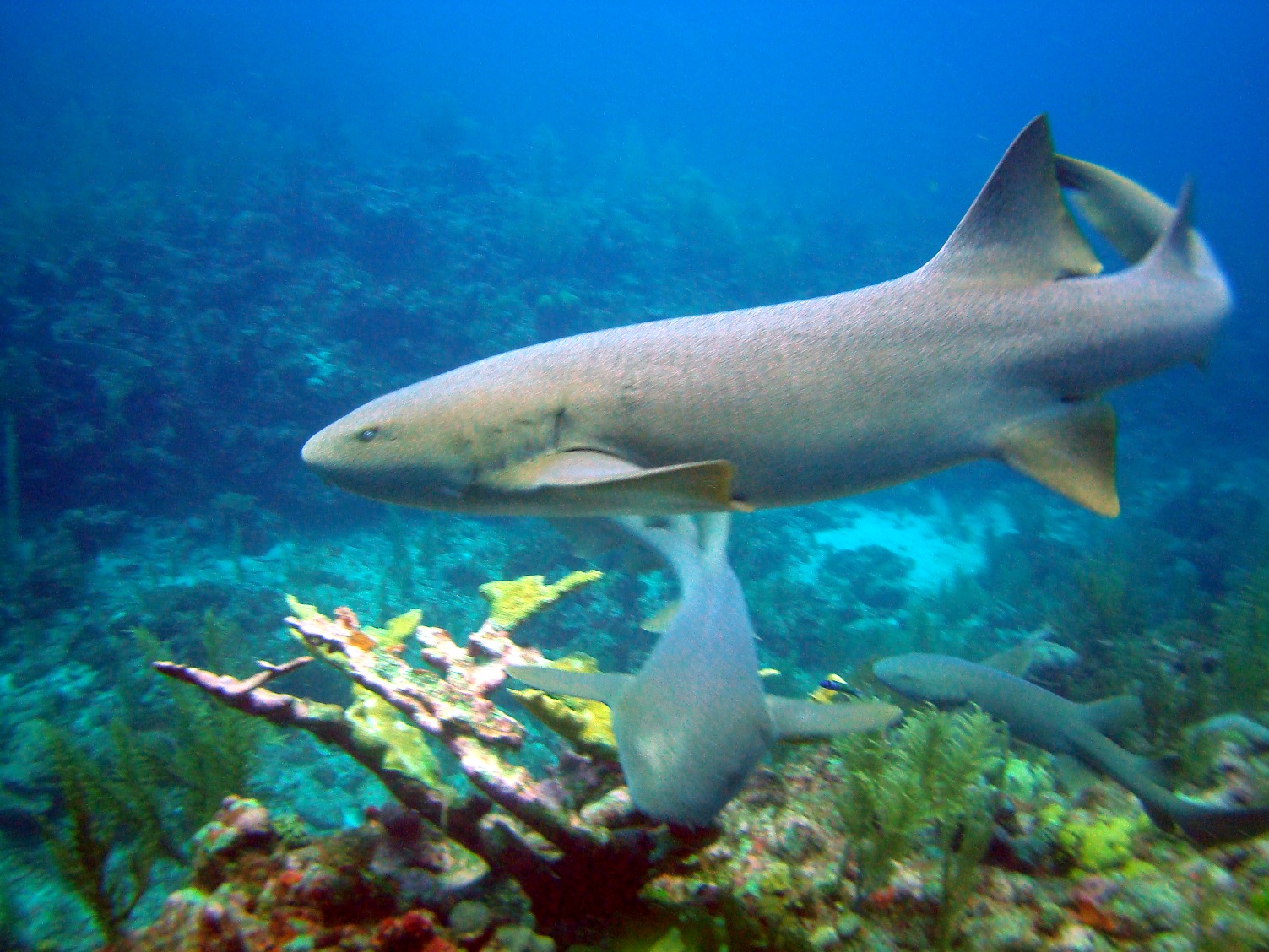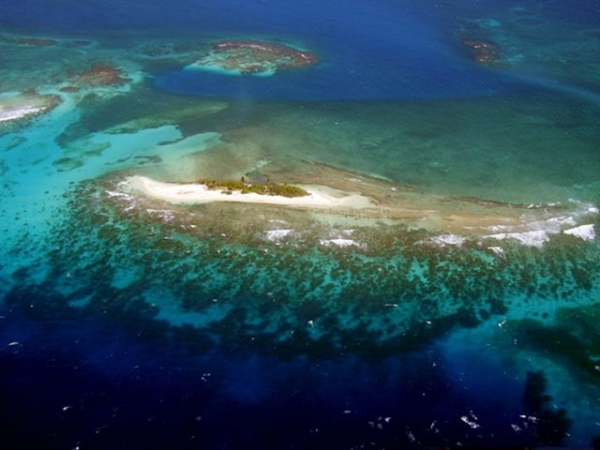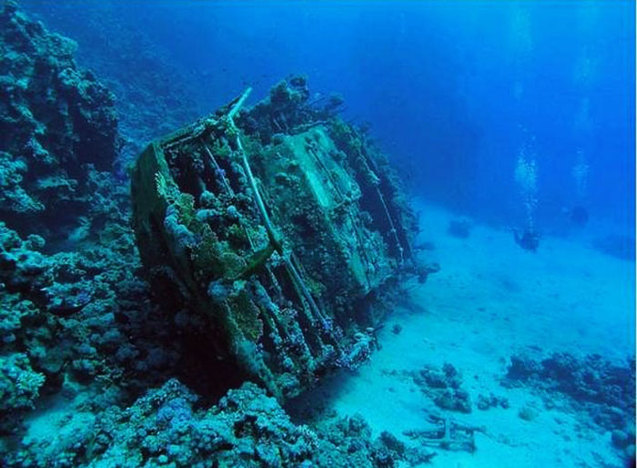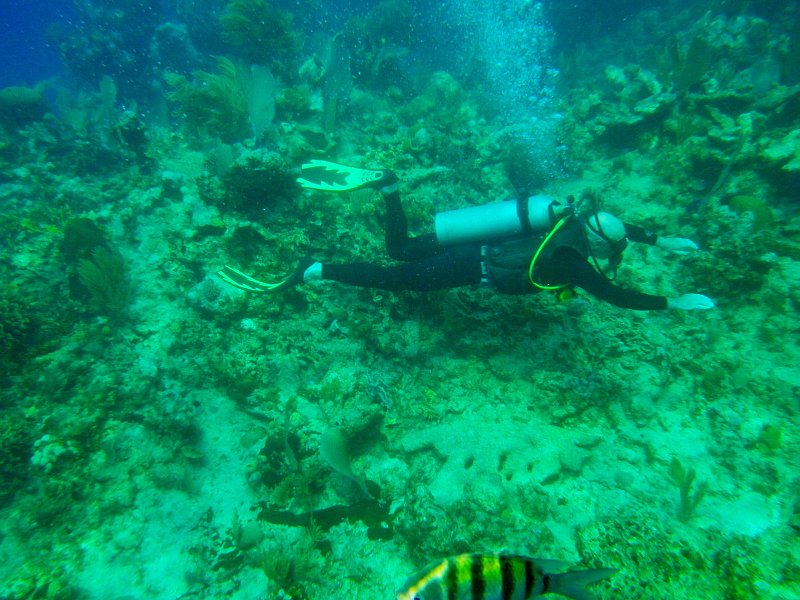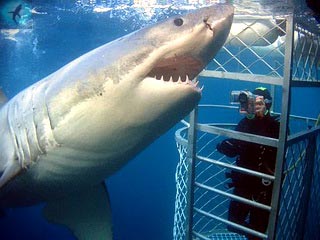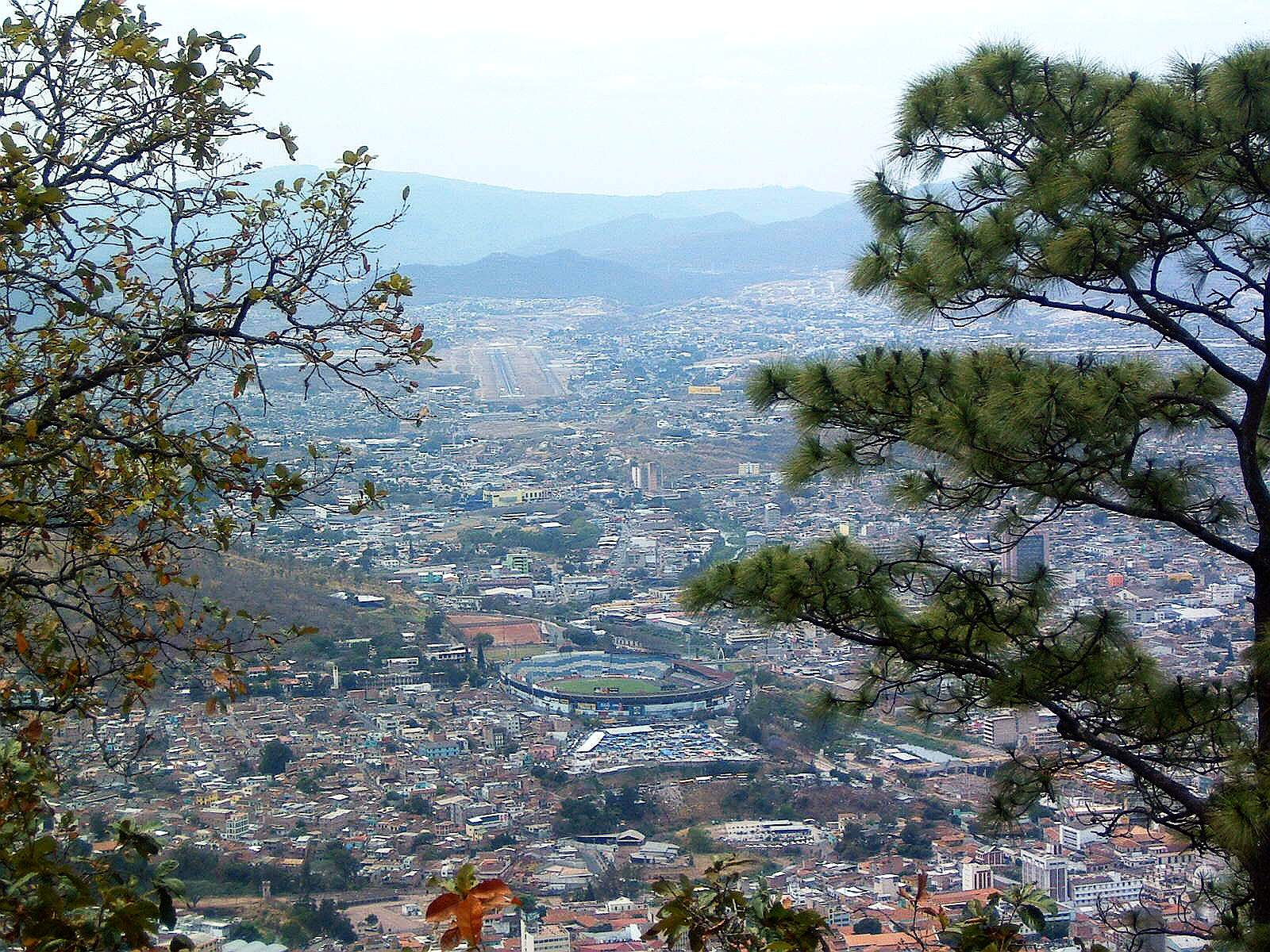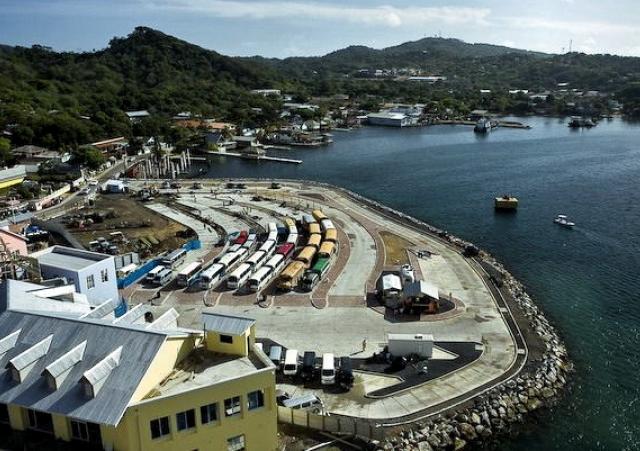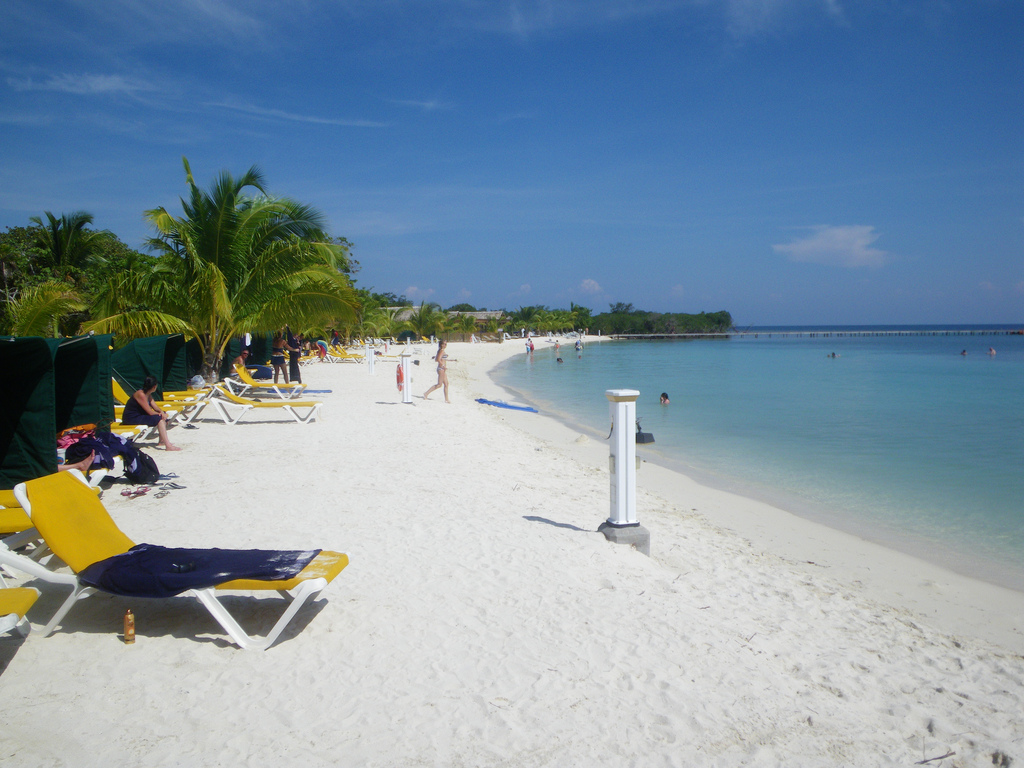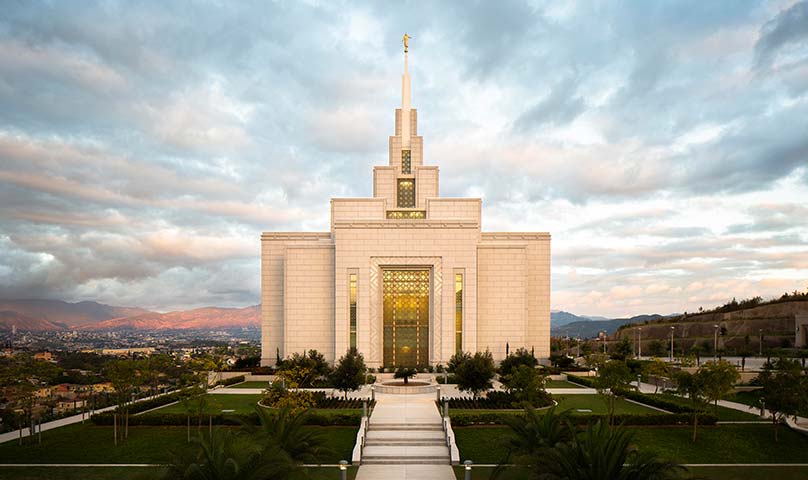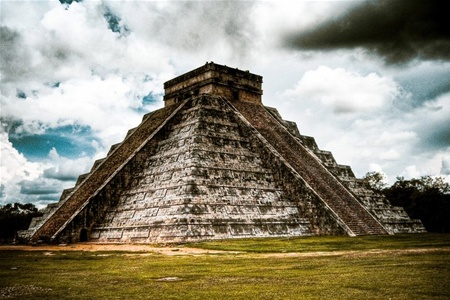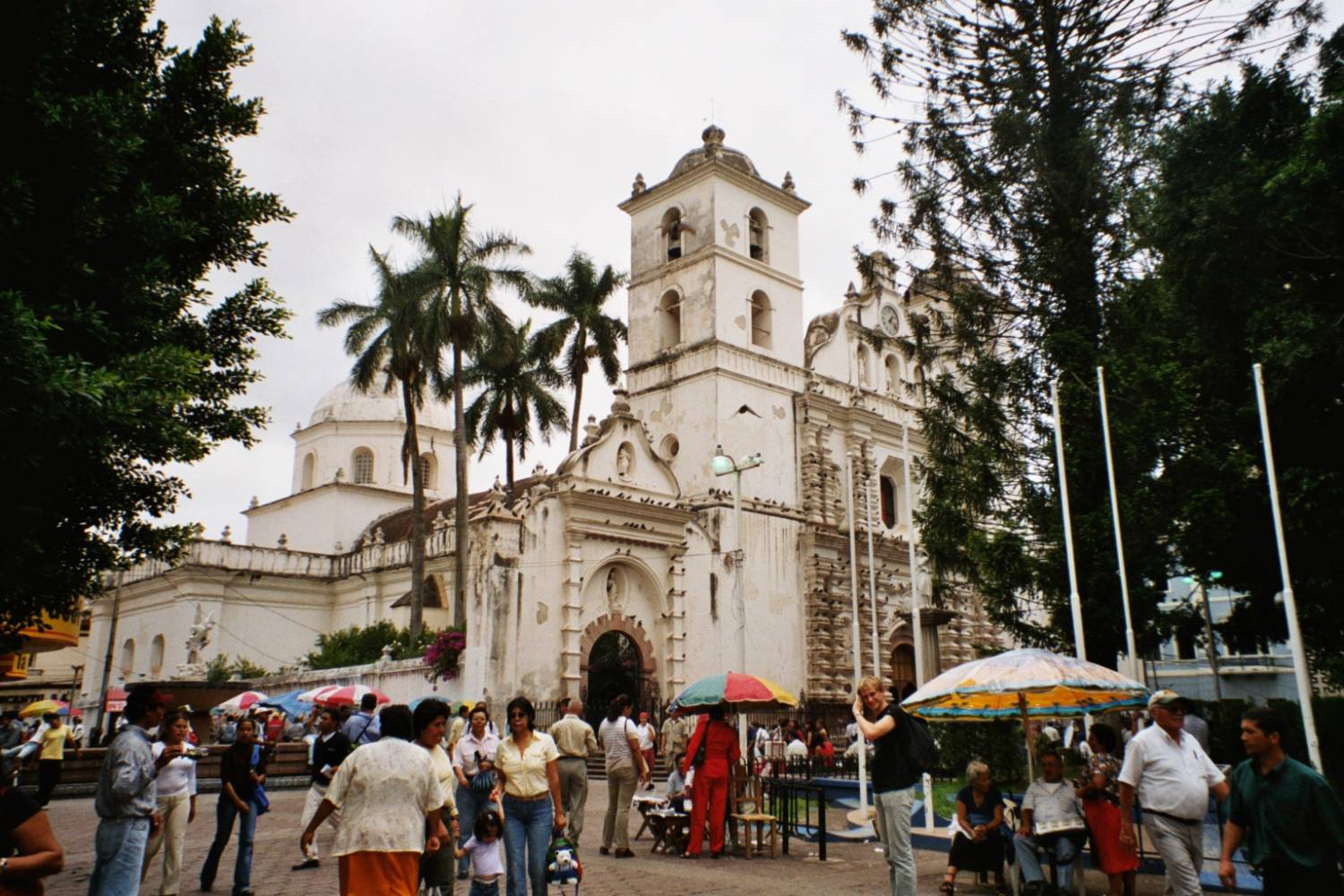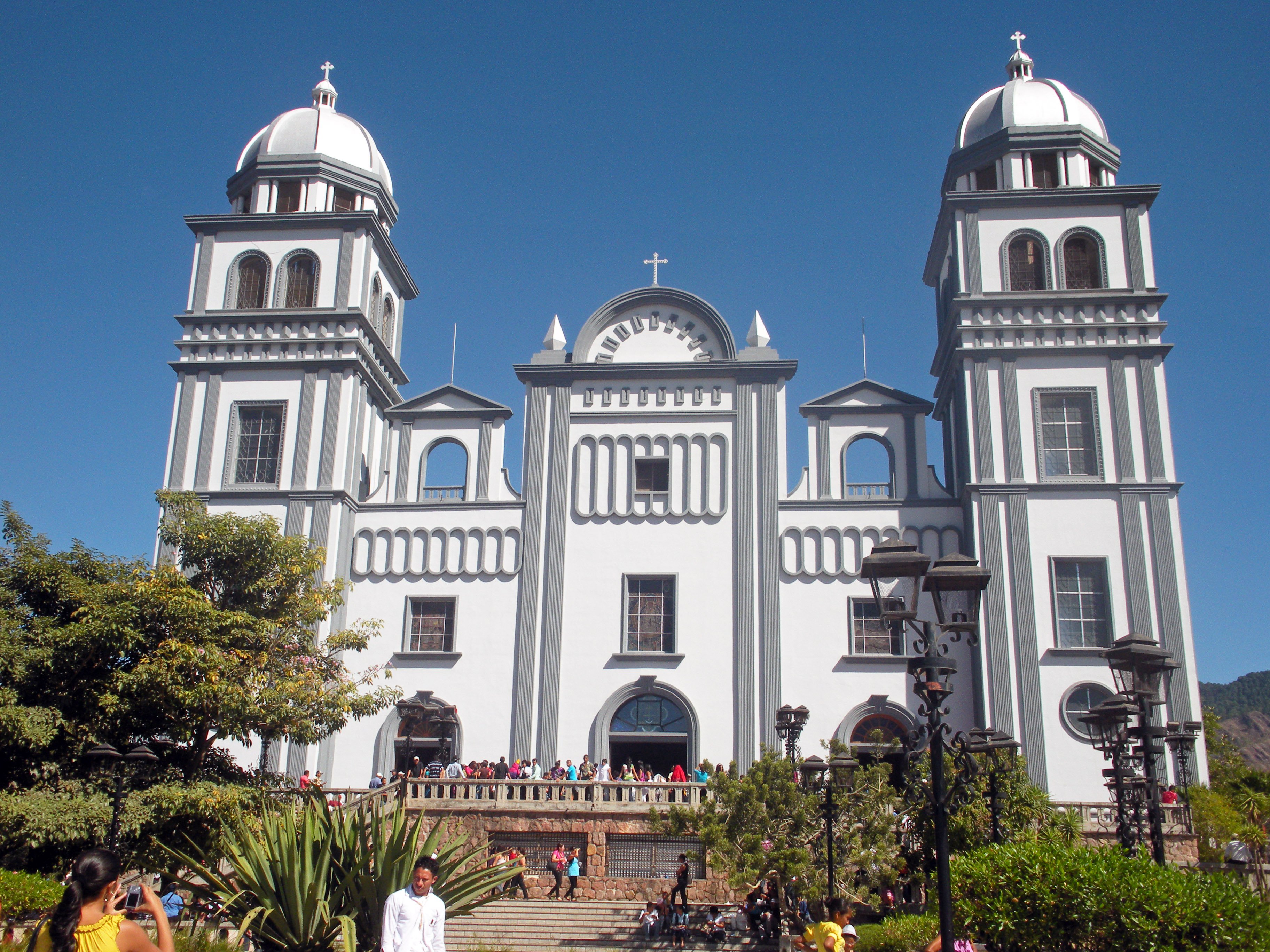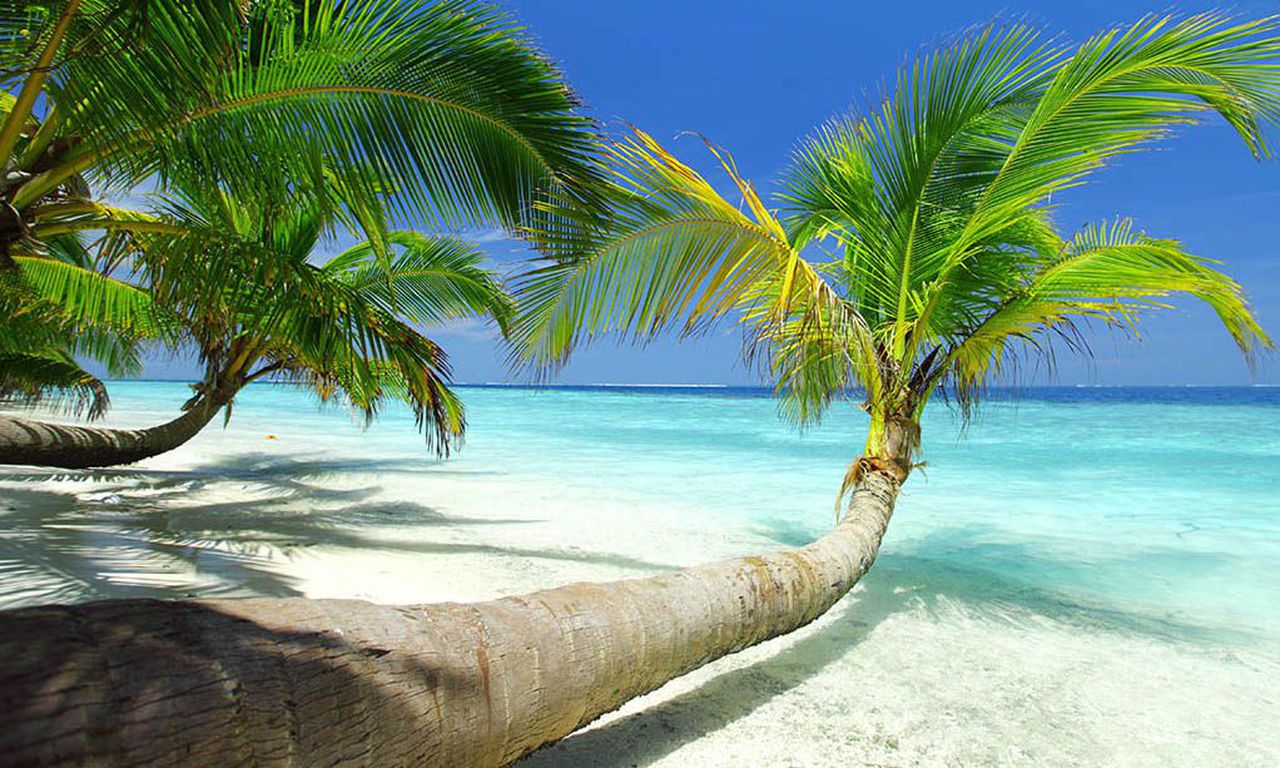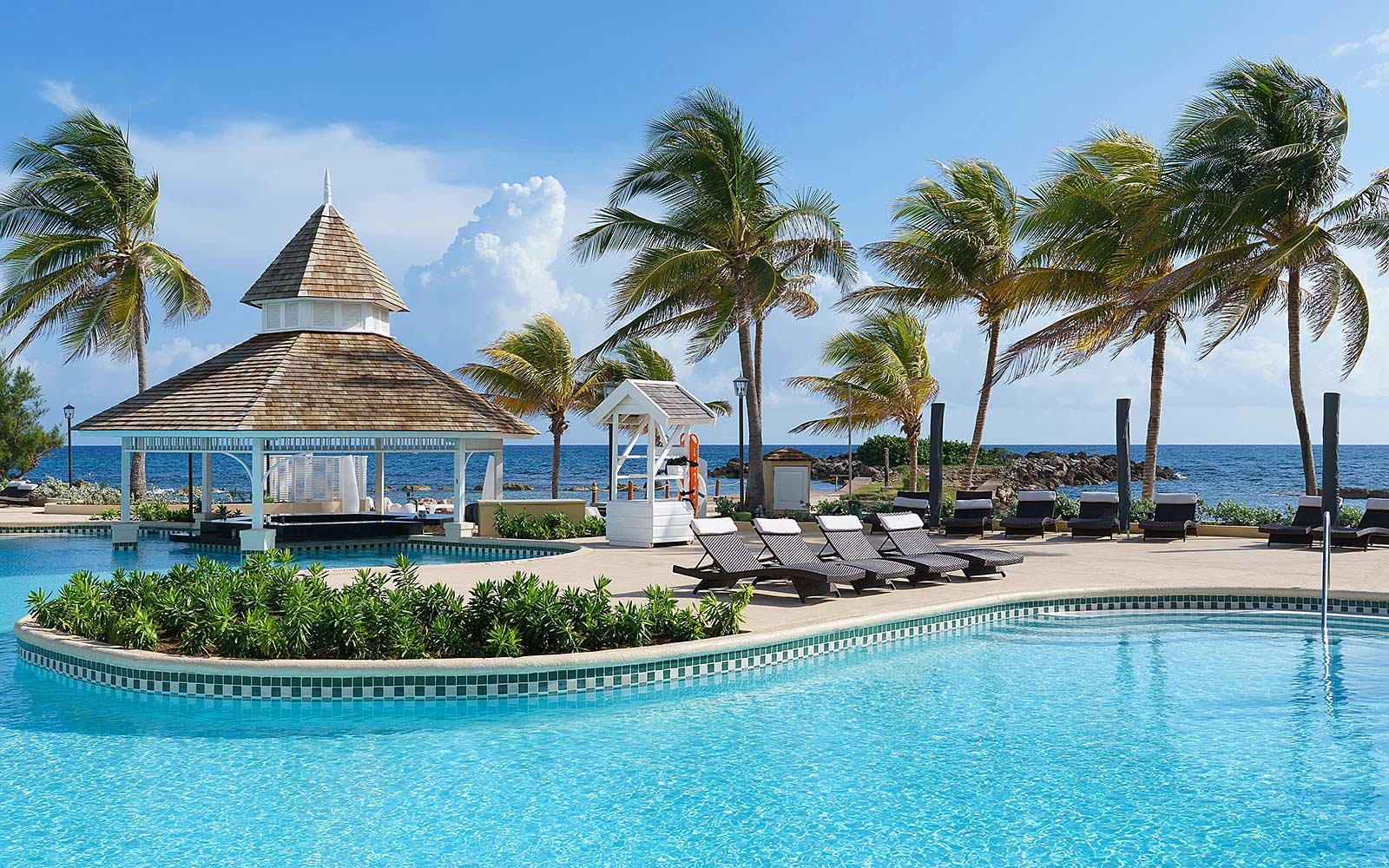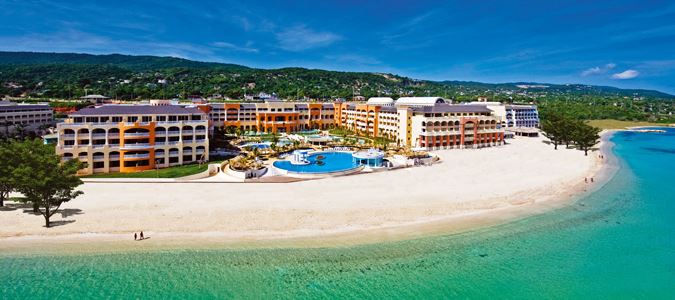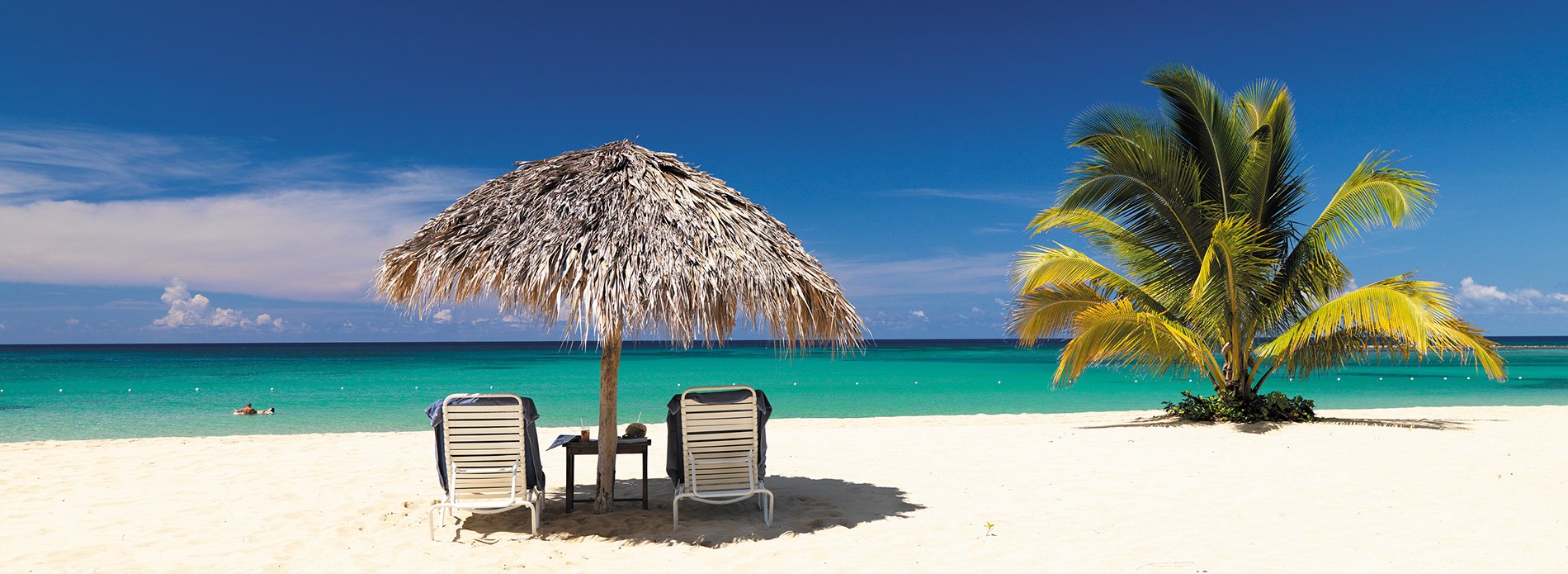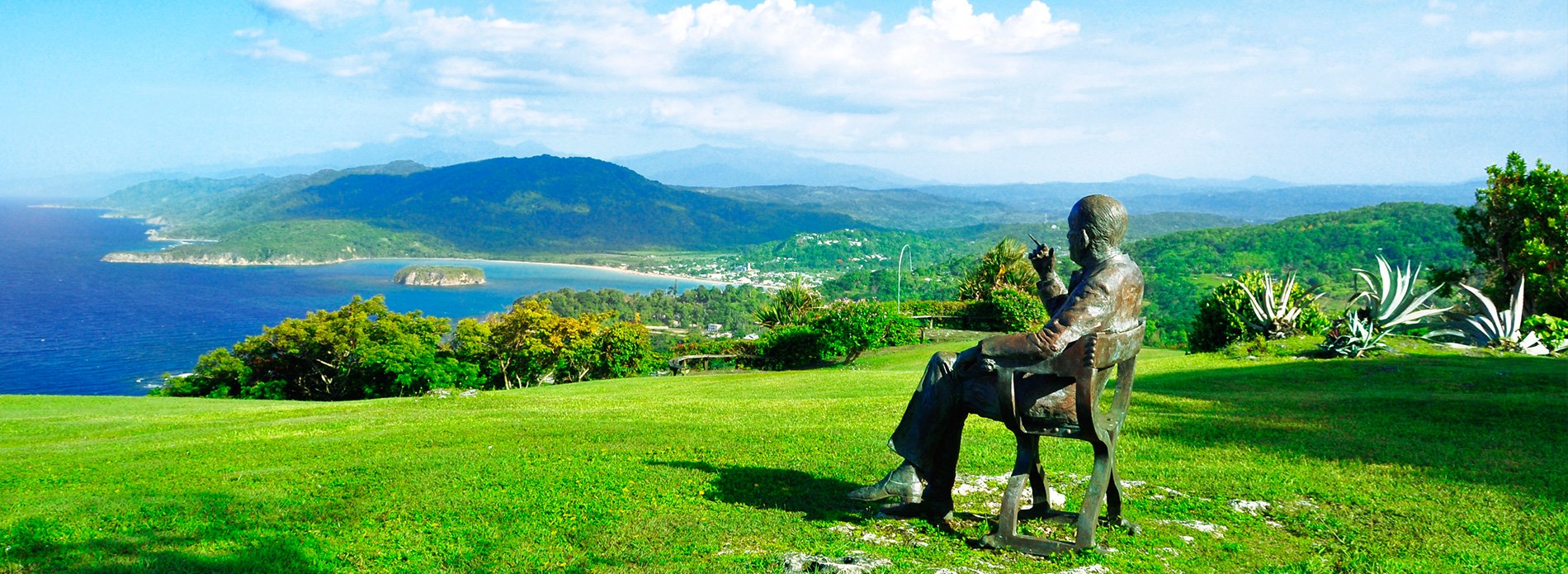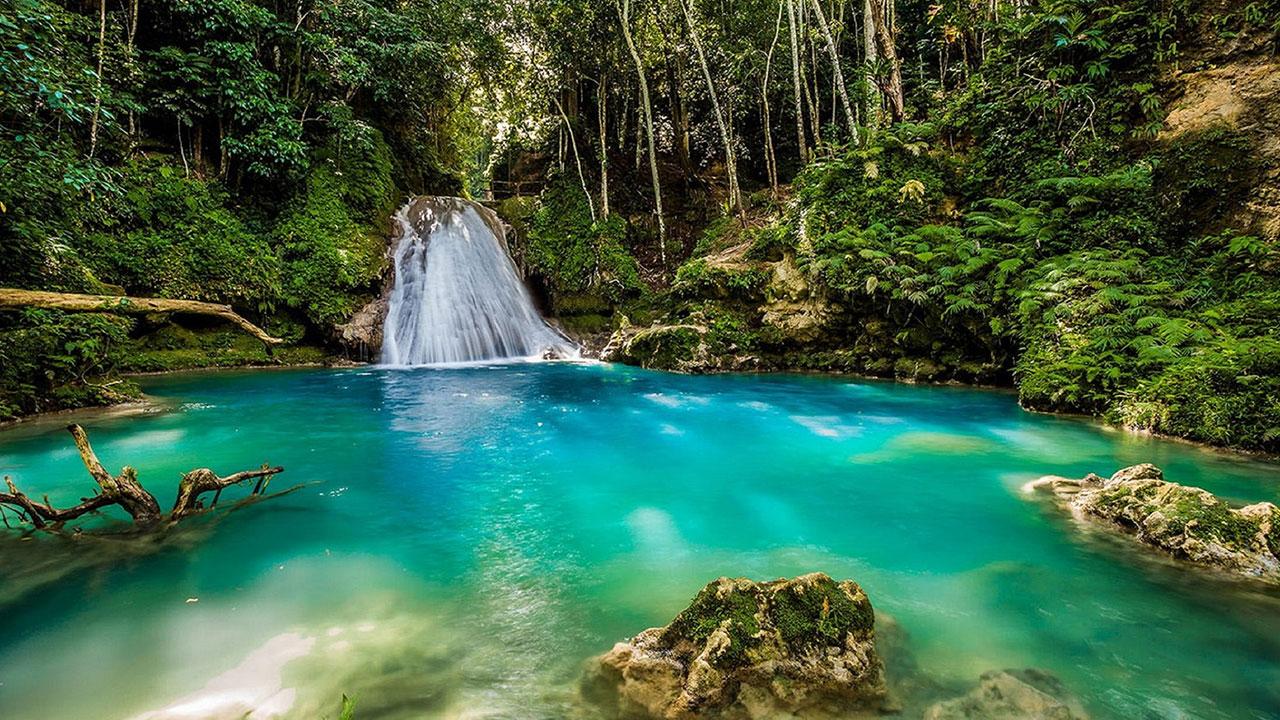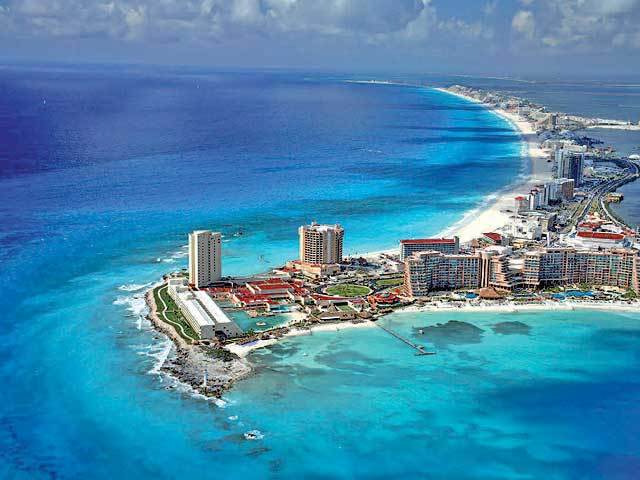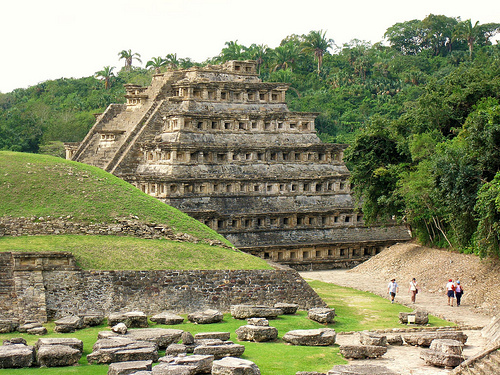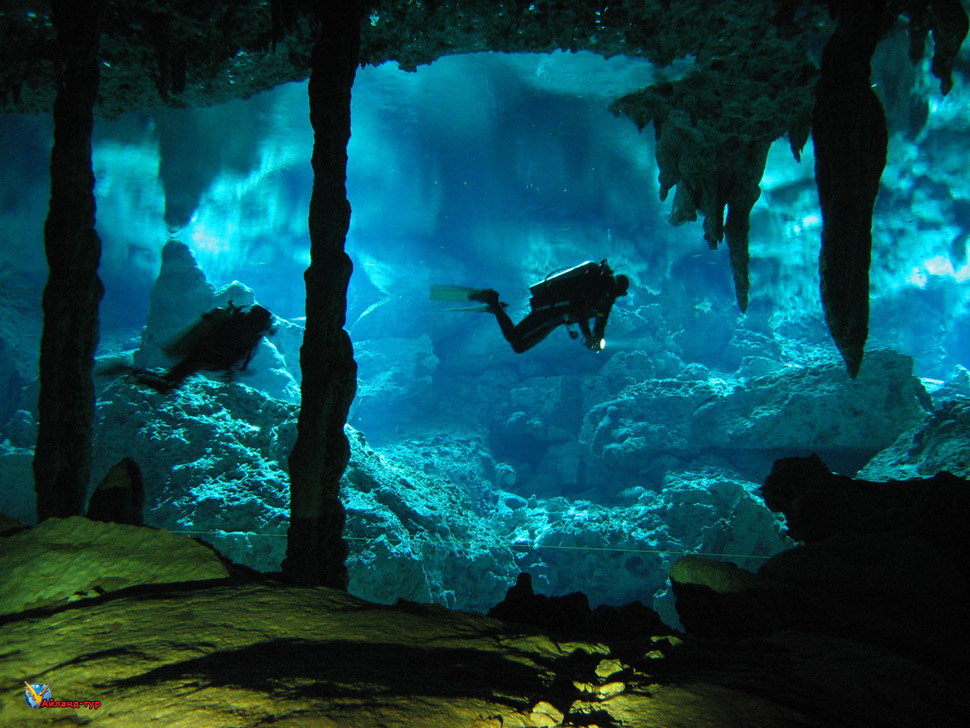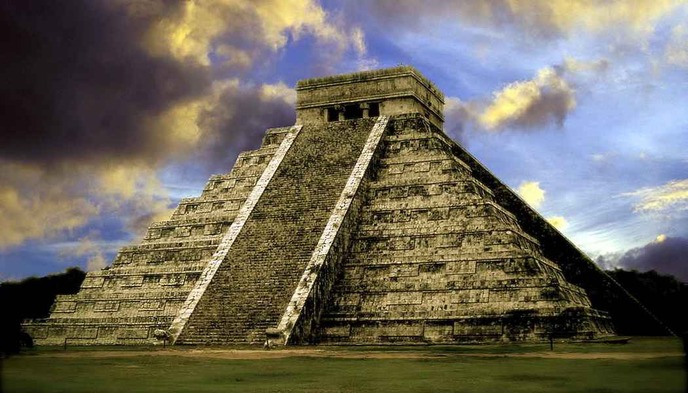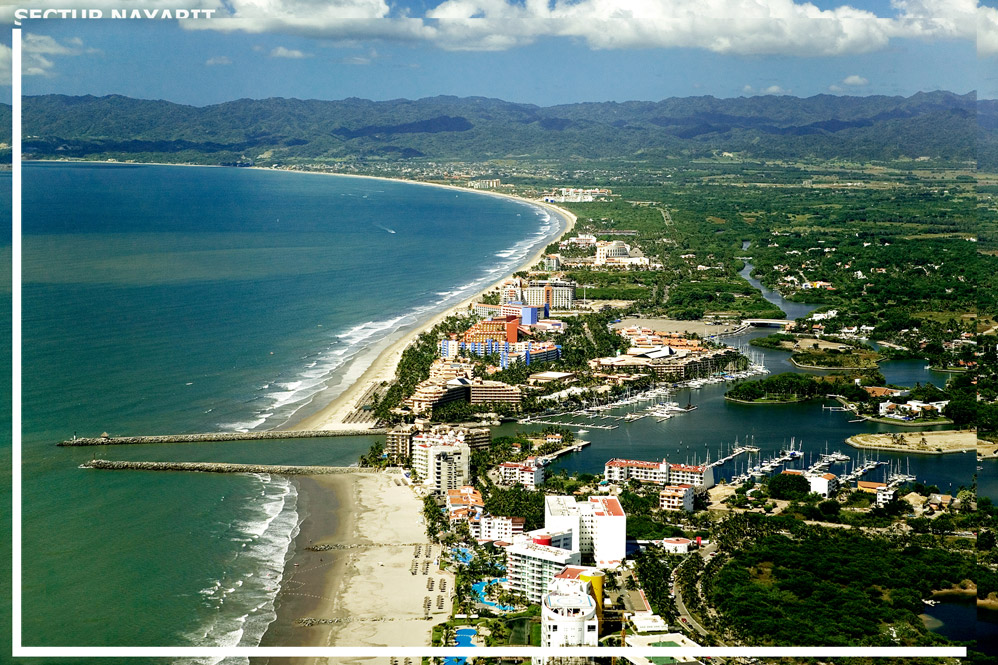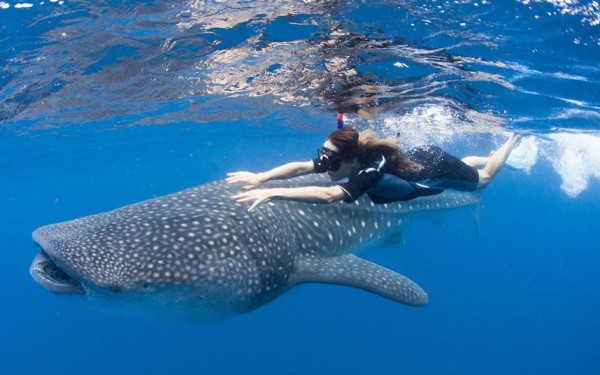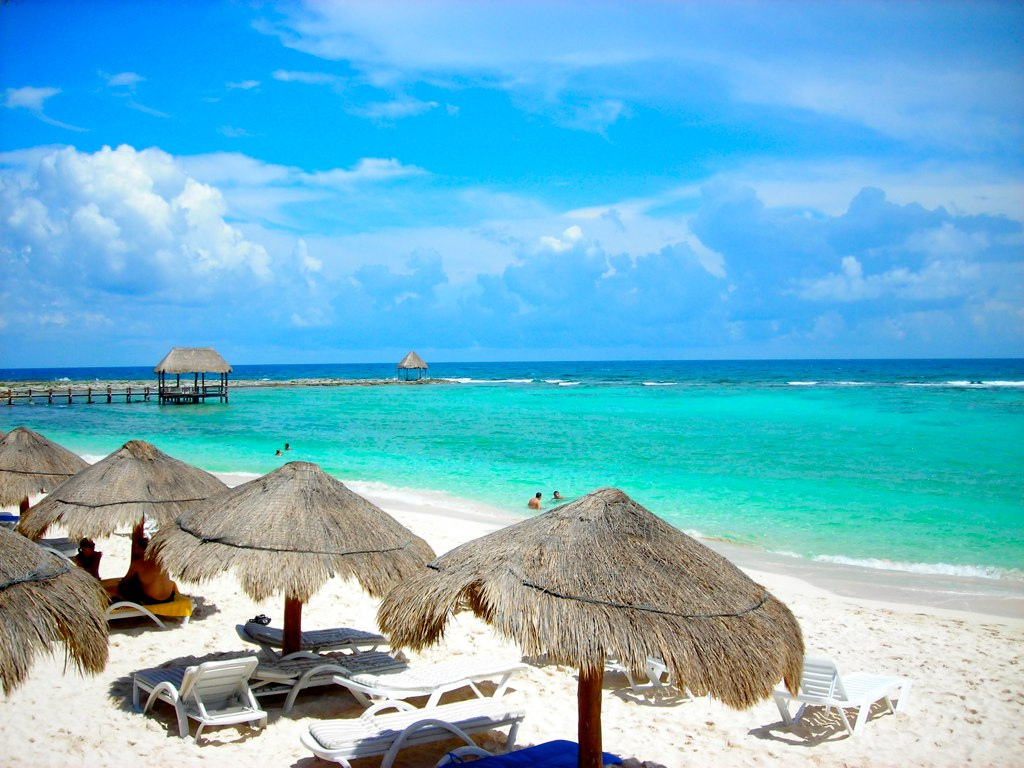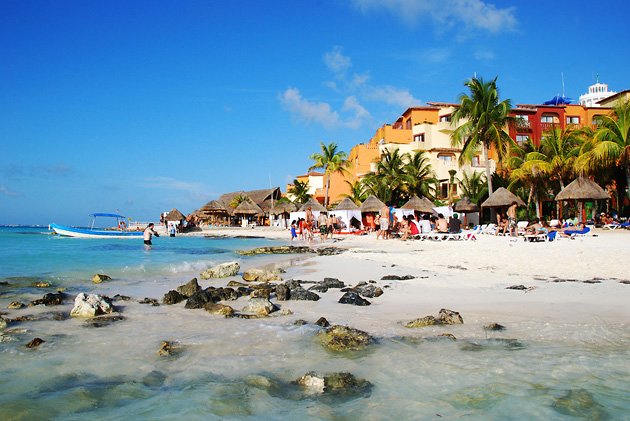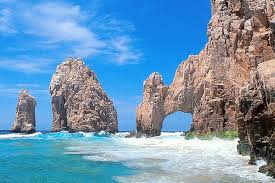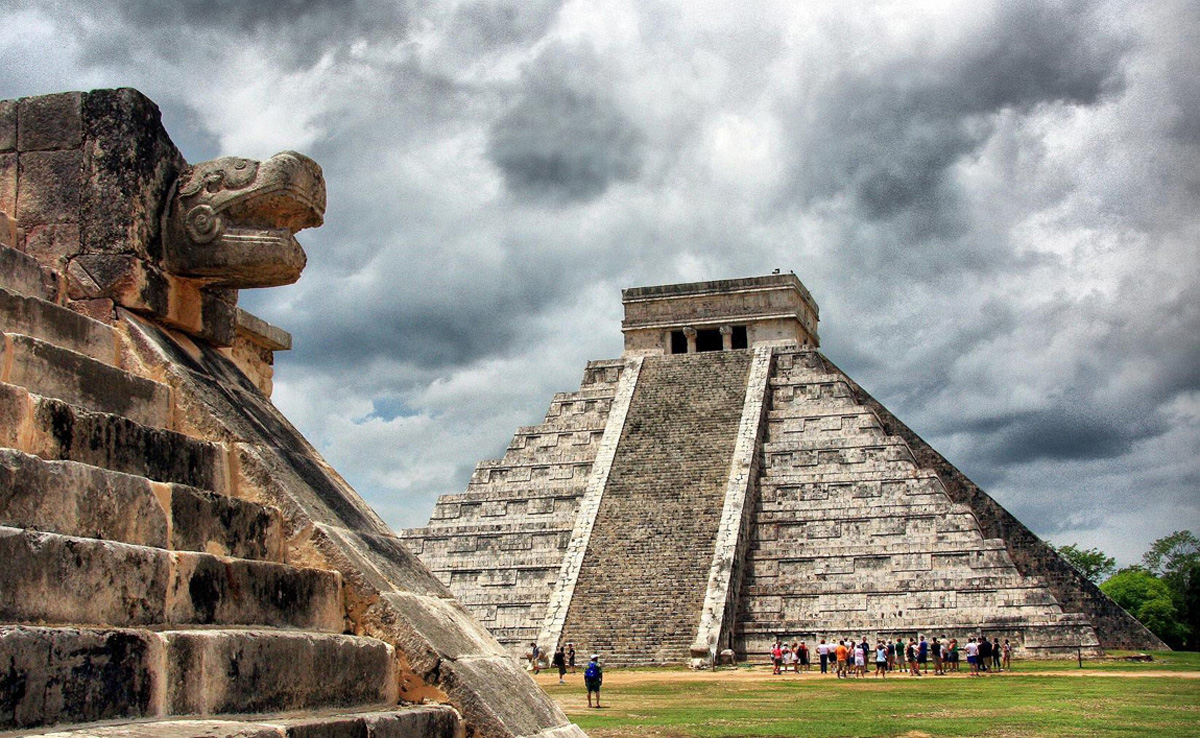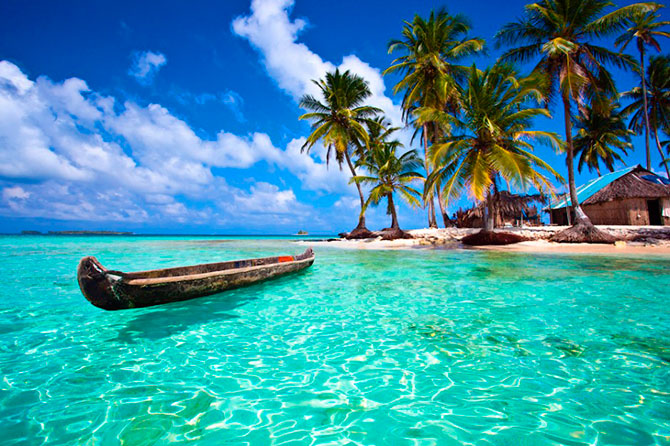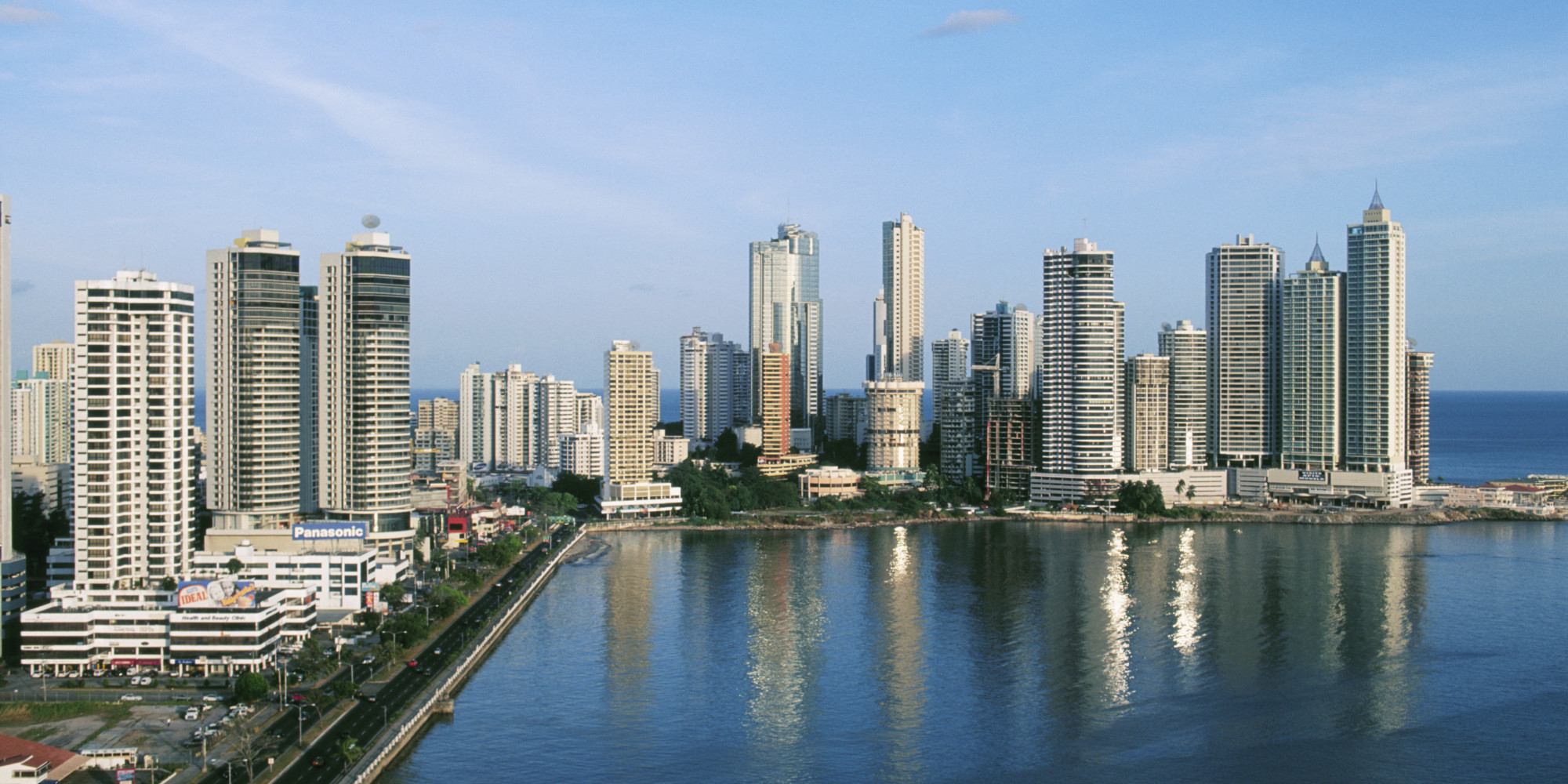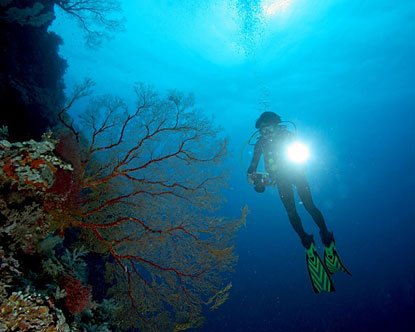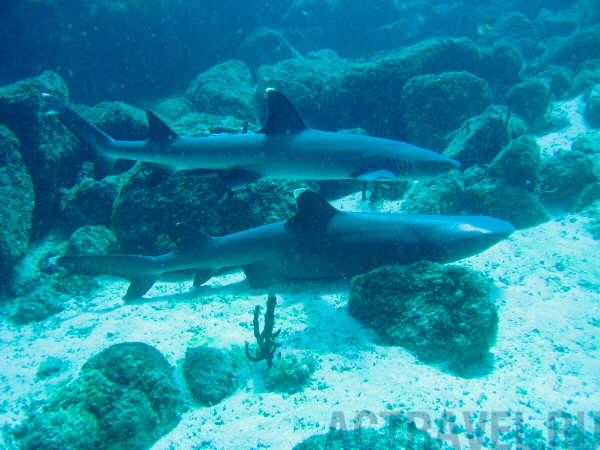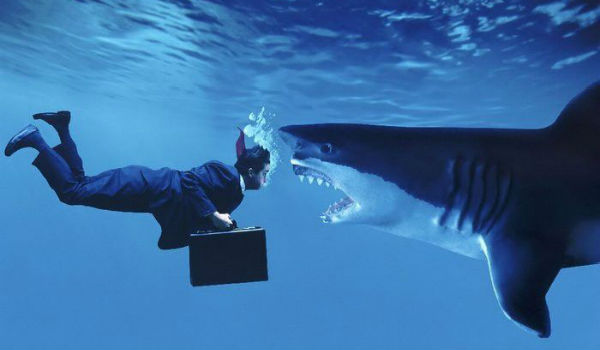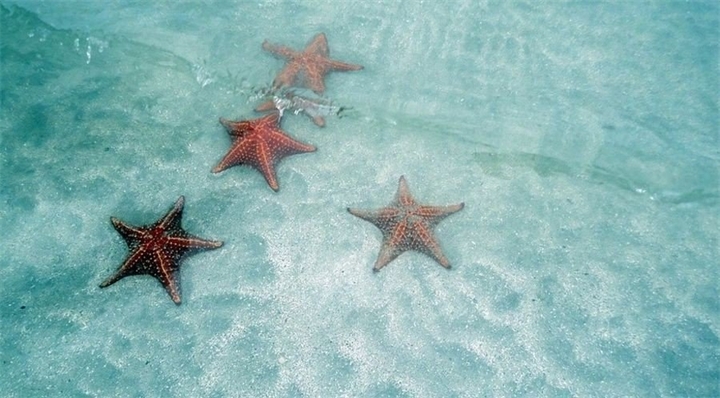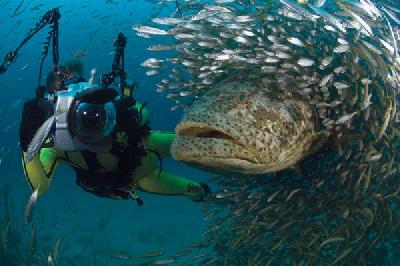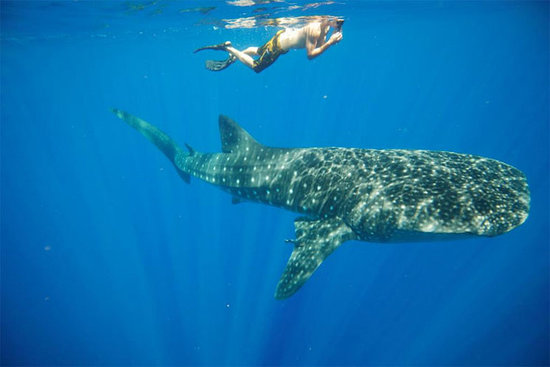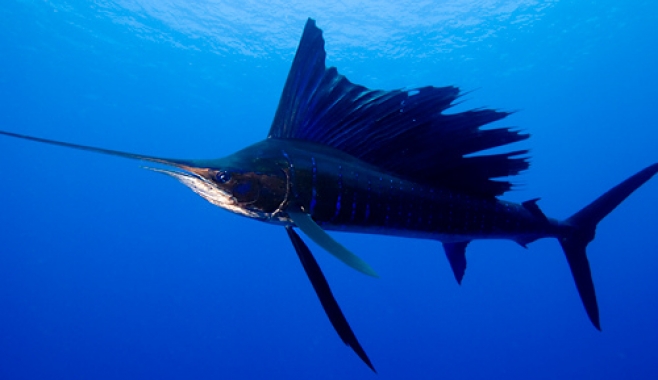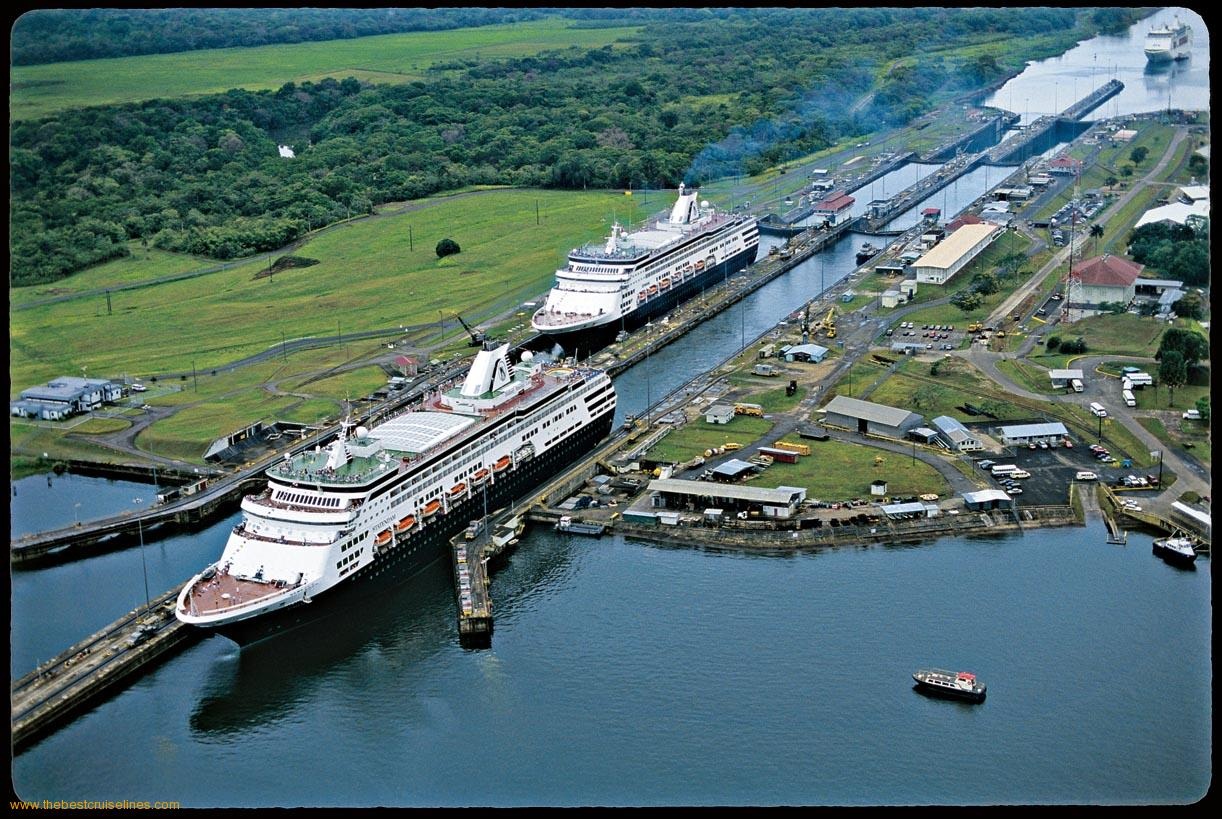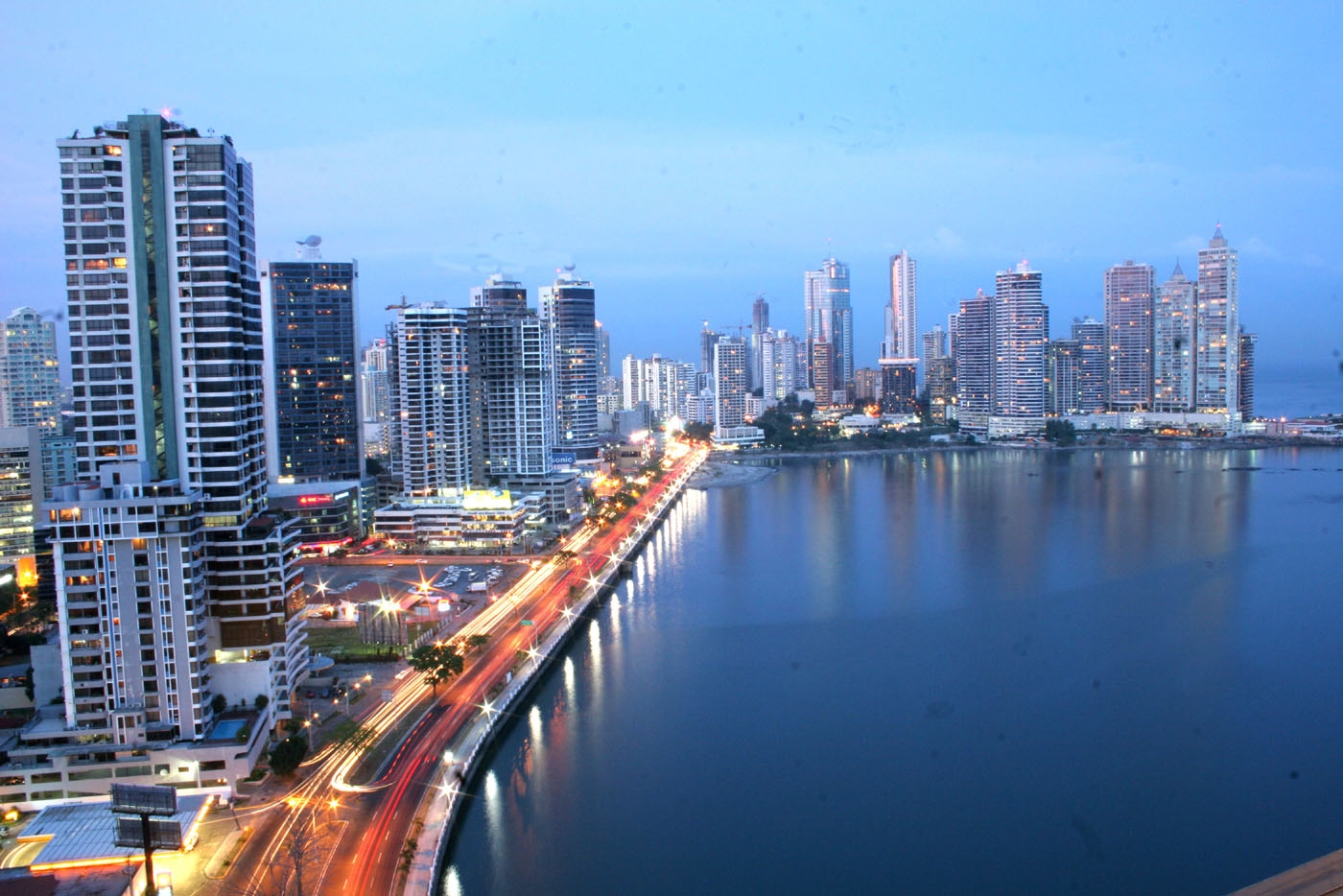Escape for the Weekend
Explore our collection of weekend
Belize
What to see in Belize? Great Blue Hole; Maya monuments; Barrier Reef; the Belize Zoo; Cathedral Reef; Elbow, Que Brada and Tarpon Caves; Silver Caves and Angel Fish Wall.
Belize is a country located on the Yucatan Peninsula in Central America and formerly known as British Honduras. Belize is a part of the British Commonwealth. The eastern side of Belize is washed by the Caribbean Sea, and in the south and west it borders with Guatemala. The climate of Belize is characterized as tropical and cyclone-prone, so the state periodically suffers from severe hurricanes and storms. The capital of the country is Belmopan.
Despite the small size the territory of Belize contains an impressive number of attractions, famous all over the world, among which there are historical monuments left by the Maya; Barrier Reef, the length of which is nearly three hundred meters; and a truly global "celebrity", whose scope strikes (123 meters deep and 305 meters wide), -- Great Blue Hole, which attracts to Belize the most experienced divers of the planet.
The largest city in the state - the same-name Belize – is famous for its architectural delights, among which special attention of tourists should be paid to St. John Cathedral and the Museum of Belize, located in a 19th century building, which formerly was a prison.
Those who are interested in the local cultural heritage should also visit the Maritime Museum, which contains an impressive collection of models and nautical instruments; the Belize Zoo, which contains more than one hundred representatives of the local fauna; and the Coastal Zone Museum where you can see the exposition of coral reefs.
The local currency is the Belize dollar, which peacefully coexists with the US dollar.
Philip S. W. Goldson International Airport (BZE)
The largest airport in the state, which has international status. It is located 16 kilometers from the city of Belize and serves the vast majority of local and international flights.
Belize City Municipal Airport (TZA)
That municipal airport, which serves Belize local airlines, has at the same time an international terminal.
Diving in Belize
Belize has a deserved reputation of one of the most attractive diving regions. And it's not only because of excellent underwater visibility, which is more than 20 meters; a unique coral reef, whose length, according to some experts, can compete with the Great Wall of China; or the rich underwater fauna, but also because of a real jewel of Belize – the Great Blue Hole. The Internet photos of this miracle, made from the air, attract crowds of divers yearning for "miraculous" diving; and legendary Jacques-Yves Cousteau did not fail to include the Blue Hall in the top ten world's best diving areas.
The Great Blue Hole is a vertical karst cave, whose 123-meter depth fascinates the entire world diving community. The diameter of the crater is just over 300 meters, and the transparency of the water in the cave is truly unique – the underwater visibility here can reach 50 meters. Thousands of years ago the cave was not so remarkable – it was on the ground, "growing" stalactites. Now, after the cave went under water, these stalactites attract divers from all over the world. Along with the stalactites, in the cave you can find some shark species so beloved by thrill-seekers.
Besides the "blue wonder of the world", in Belize there are other, albeit not as well-known but no less fascinating places suitable for high-quality diving. For example, in a fairly popular aquarium and on the Cathedral Reef you can take in relaxed diving that produces calming impression due to the shallow waters and low flow. Coral reefs almost come to the surface here, so at one dive you can see a lot of marine life - tropical fish, shellfish and bright molluscs.
Those divers, who appreciate great depth, will like such places as Elbow, Que Brada and Tarpon Caves, famous by accumulations of tarpon, barracuda, sharks and pelagic fish. Those, who dive in the Silver Caves and Angel Fish Wall, will appreciate the unusual underwater topography of the dive areas - exploration of small tunnels, caves and wonderful unexpected crevices will captivate even the most jaded divers. Here you can see black coral trees, purple sponges and gorgonians, and swim with octopuses, lobsters, nurse sharks, black basses and eagle rays.
You can enjoy excellent diving near Ambergris Caye Island, in the National Park Half Moon Caye, and in the marine reserve Gladden Spit, the central part of the Great Barrier Reef in Belize.
The ideal time for diving is the period from November to May, but in April in the waters of the Belize coast tiger sharks and humpback whales can be met, so from April to June divers should be particularly careful.
Canada
Canada is a country in the northern part of North America. Its ten provinces and three territories extend from the Atlantic to the Pacific and northward into the Arctic Ocean, covering 9.98 million square kilometres (3.85 million square miles), making it the world's second-largest country by total area and the fourth-largest country by land area. Canada's sole border with the United States is the world's longest bi-national land border. The majority of the country has a cold or severely cold winter climate, but southerly areas are warm in summer. Canada is sparsely populated, the majority of its land territory being dominated by forest and tundra and the Rocky Mountains. It is highly urbanized with 82 per cent of the 35.15 million people concentrated in large and medium-sized cities, many near the southern border. Its capital is Ottawa, and its largest metropolitan areas are Toronto, Montreal and Vancouver.
Canada is a country in the northern part of North America. Its ten provinces and three territories extend from the Atlantic to the Pacific and northward into the Arctic Ocean, covering 9.98 million square kilometres (3.85 million square miles), making it the world's second-largest country by total area and the fourth-largest country by land area. Canada's sole border with the United States is the world's longest bi-national land border. The majority of the country has a cold or severely cold winter climate, but southerly areas are warm in summer. Canada is sparsely populated, the majority of its land territory being dominated by forest and tundra and the Rocky Mountains. It is highly urbanized with 82 per cent of the 35.15 million people concentrated in large and medium-sized cities, many near the southern border. Its capital is Ottawa, and its largest metropolitan areas are Toronto, Montreal and Vancouver.
Various indigenous peoples had inhabited what is now Canada for thousands of years prior to European colonization. Beginning in the 16th century, British and French claims were made on the area, with the colony of Canada first being established by the French in 1535 during Jacques Cartier's second voyage to New France. As a consequence of various conflicts, Great Britain gained and lost territories within British North America until it was left, in the late 18th century, with what mostly geographically comprises Canada today. Pursuant to the British North America Act, on July 1, 1867, the colonies of Canada, New Brunswick, and Nova Scotia joined to form the semi-autonomous federal Dominion of Canada. This began an accretion of provinces and territories to the mostly self-governing Dominion to the present ten provinces and three territories forming modern Canada.
In 1931, Canada achieved near-total independence from the United Kingdom with the Statute of Westminster 1931, but at the time, Canada decided to allow the British Parliament to temporarily retain the power to amend Canada's constitution, on request from the Parliament of Canada. With the Constitution Act 1982, Canada took over that authority (as the conclusion of Patriation), removing the last remaining ties of legal dependence on the British Parliament, giving the country full sovereignty.
Canada is a federal parliamentary democracy and a constitutional monarchy, with Queen Elizabeth II being the head of state. The country is officially bilingual at the federal level. It is one of the world's most ethnically diverse and multicultural nations, the product of large-scale immigration from many other countries. Its advanced economy is the tenth-largest in the world, relying chiefly upon its abundant natural resources and well-developed international trade networks. Canada's long and complex relationship with the United States has had a significant impact on its economy and culture.
Canada is a developed country and has the tenth-highest nominal per capita income globally as well as the ninth-highest ranking in the Human Development Index. It ranks among the highest in international measurements of government transparency, civil liberties, quality of life, economic freedom, and education. Canada is a realm within the Commonwealth of Nations, a member of the Francophonie, and part of several major international and intergovernmental institutions or groupings including the United Nations, the North Atlantic Treaty Organization, the G7 (formerly G8), the Group of Ten, the G20, the North American Free Trade Agreement and the Asia-Pacific Economic Cooperation forum.
This is a list of international airports in Canada. These airports are listed in the Canada Flight Supplement, or Water Aerodrome Supplement, published by Nav Canada and each is classified as an airport of entry. All these airports, with the exception of military airports, have a Canada Border Services Agency person available but they may not be available 24 hours a day and may only be open part of the week. Montréal-Pierre Elliott Trudeau International Airport serves a higher percentage of international passengers than any other Canadian airport.[1]
Of the airports below, only 13 are designated as international airports by Transport Canada[citation needed]: St John's, Gander, Halifax, Moncton, Fredericton, Quebec, Montreal, Toronto, Ottawa, Winnipeg, Calgary, Edmonton and Vancouver.
Costa Rica
What to see in Costa Rica? La Amistad park; volcanoes Poas and Irazu; Caño Negro and Isla Bolaños; Tortuga; marine life of Coco Island; Playa Flamingo, Playa La Pinta, Nosara and Playa Hunkiyal; Cahuita reef; and bull sharks of Beth Island.
Costa Rica is a state in Central America. Its eastern shores are washed by the Caribbean Sea, and the southern and western – by the Pacific Ocean. The nearest neighbors are the Republic of Panama and Nicaragua. Lion's share of the land is covered with lush tropical forests, which produce valuable timbers. The climate of Costa Rica is subequatorial, due to rough terrain and climatic conditions climate conditions in the regions differ greatly. The capital is San Jose.
Costa Rica is rich in attractions that can satisfy any tourist. Here there is the famous international park La Amistad, visiting of which can make happy anyone. Near the capital, in the town of Alajuela, you can visit Juan Santamaria Museum, the Zoo, as well as admire the Poas Volcano. You can also visit the active volcano Irazu near Cartago, near which there is the National Park. In La Guasima you can see the world's largest butterfly farm. Coffee lovers will enjoy trips to the Coffee Museum and the Coffee Institute of San Pedro de Barva, Heredia. Tourists, interested in the cultural heritage of the country, can visit the Museum of History of Religion and Antiquities in Orosi.
Those who are fond of nature will like nature reserves – national wildlife refugesCaño Negro and Isla Bolaños and forest reserve Santa Elena, biological reserve Carara and many others. Also it is worth visiting the luxurious Costa Rican waterfalls of San Rafael, La Paz and Catarata de la Fortuna, and highlight of Costa Rica - the famous "turtle" island of Tortuga.
The national currency is the Costa Rican Colon, but according a good old touristic tradition US dollars are also widespread here.
International airports in Costa Rica
In Costa Rica, four airports have international status, but two of them are the main- Juan Santamaria and Daniel Oduber Quirós.
• Daniel Oduber Quiros International Airport (LIR)
Located in Guanacaste.
• Juan Santamaria International Airport (SJO)
Located in the capital of the state and has the status of the most popular and busiest airport in the country.
• Tobias Bolanos International Airport (SYQ)
• Pablo Zidar International Airport (LIO)
Located in Puerto Limon, Province of Limon. It is also known as Limon International Airport.
Diving in Costa Rica
Diving in Costa Rica, according to the most experienced "sea dogs", is the most fascinating among many Caribbean countries. The warm climate, constant temperature of clean water and diverse underwater world already provide the country with stable popularity among fans of diving, but the real highlights of Costa Rica are hard-to-reach Isla del Coco and Coco Island, also known as Coconut Island - the world’s largest uninhabited island. Coco Island is surrounded by many myths, which makes its halo glow even brighter. There are rumors that Coconut became the prototype of the famous "Jurassic Park" by Spielberg and "Treasure Island" by R.L. Stevenson; and the respected underwater explorer Jacques Cousteau awarded Coconut with the title of "most beautiful island" in the world. Also, they say that on Coco Island gold of the Incas was buried, which has been worrying adventurers’ hearts for many centuries. No wonder that after so many legends glorifying the unusual island, Costa Rica is flooded with lots of divers who want to see these miracles with their own eyes, or rather, to feel all its marvels in diving.
The underwater fauna off the coast of Coco Island strikes by extraordinary diversity. Here you can find such fish as hammerhead sharks, giant manta rays, grayfin jewfish and whitetip reef sharks, marlins, tunas and sardines. The coral thickets are inhabited by eels, sea turtles, octopuses and parrot fish. Sometimes you can see dolphins or not too sociable whales. Due to the unique ecosystem Coconut Island is included in the list of world heritage of humanity.
It is worth noting that, despite the excellent visibility of water, strength and direction of coastal currents can change in just a few moments, so diving here is recommended only for experienced divers.
Divers also like such places as Playa Flamingo, Playa La Pinta, Nosara and Playa Hunkiyal. You will also like Bahia Drake, Marine National Park Ballena, famous coral reef in Cahuita, which is part of the National Park and the island Beth, where you can meet massive bull sharks and flying rays.
Cuba
Cuba, officially the Republic of Cuba República de Cuba , is a country comprising the island of Cuba as well as Isla de la Juventud and several minor archipelagos. Cuba is located in the northern Caribbean where the Caribbean Sea, the Gulf of Mexico, and the Atlantic Ocean meet. It is south of both the U.S. state of Florida and the Bahamas, west of Haiti, and north of Jamaica. Havana is the largest city and capital; other major cities include Santiago de Cuba and Camagüey. Cuba is the largest island in the Caribbean, with an area of 109,884 square kilometres (42,426 sq mi), and the second-most populous after Hispaniola, with over 11 million inhabitants.
Cuba is an archipelago of islands located in the northern Caribbean Sea at the confluence with the Gulf of Mexico and the Atlantic Ocean. It lies between latitudes 19°and 24°N, and longitudes 74° and 85°W. The United States lies 150 kilometers (93 miles) across the Straits of Florida to the north and northwest (to the closest tip of Key West, Florida), and the Bahamas 21 km (13 mi) to the north. Mexico lies 210 kilometers (130 miles) across the Yucatán Channel to the west (to the closest tip of Cabo Catoche in the State of Quintana Roo).
Haiti is 77 km (48 mi) to the east, Jamaica (140 km/87 mi) and the Cayman Islands to the south. Cuba is the principal island, surrounded by four smaller groups of islands: the Colorados Archipelago on the northwestern coast, the Sabana-Camagüey Archipelago on the north-central Atlantic coast, the Jardines de la Reina on the south-central coast and the Canarreos Archipelago on the southwestern coast.
Sierra MaestraThe main island, named Cuba, is 1,250 km (780 mi) long, constituting most of the nation's land area (104,556 km2 (40,369 sq mi)) and is the largest island in the Caribbean and 17th-largest island in the world by land area. The main island consists mostly of flat to rolling plains apart from the Sierra Maestra mountains in the southeast, whose highest point is Pico Turquino (1,974 m (6,476 ft)).
The second-largest island is Isla de la Juventud (Isle of Youth) in the Canarreos archipelago, with an area of 2,200 km2 (849 sq mi). Cuba has an official area (land area) of 109,884 km2 (42,426 sq mi). Its area is 110,860 km2 (42,803 sq mi) including coastal and territorial waters.
Climate
Main article: Climate of Cuba
Viñales ValleyWith the entire island south of the Tropic of Cancer, the local climate is tropical, moderated by northeasterly trade winds that blow year-round. The temperature is also shaped by the Caribbean current, which brings in warm water from the equator. This makes the climate of Cuba warmer than that of Hong Kong, which is at around the same latitude as Cuba but has a subtropical rather than a tropical climate. In general (with local variations), there is a drier season from November to April, and a rainier season from May to October. The average temperature is 21 °C (69.8 °F) in January and 27 °C (80.6 °F) in July. The warm temperatures of the Caribbean Sea and the fact that Cuba sits across the entrance to the Gulf of Mexico combine to make the country prone to frequent hurricanes. These are most common in September and October.
José Martí International Airport Havana
Ignacio Agramonte International Airport Camagüey
Dominican Republic
What to see in the Dominican Republic? Palaces and cathedrals of Santo Domingo; Lemon Waterfall, Gri-Gri Lagoon and Amber Coast; the St. George wreck; Punta Cana, Viva Shallow and Catalina Island; wrecks the Coco, the Patricia and the Atlantic Princess; and Padre Nuestra cave
The Dominican Republic occupies the eastern coast of Haiti Island in the Caribbean and several nearby islands, including the Greater Antilles. Its nearest neighbor is the Republic of Haiti, located on the same-name island. The climate of the Dominican Republic is classified as humid subtropical - there are often sea breezes and trade winds here.
In the capital of the Dominican Republic – Santo Domingo – there are many local attractions, including Higuey Basilica with its unusual architecture, the gothic Cathedral of the 16th century, the church of San Nicolas and Regina Angelorum, the Chapel of St. Andrew and the oldest church in America - Santa Maria. Also, tourists will like to explore the beautiful palaces, for which the Dominican Republic is notable, for example, Casa Borgelya and Casa Del Duarte. Surprisingly, even the first house on the island, built of stone, has remained intact there.
Many historical monuments of the island are dedicated to the notorious Christopher Columbus. These include the Museum las Casas Reales, the palace of his son El Alcazar and Columbus Park, where there is a bronze statue of Christopher.Those who like natural beauty can visit Lemon Waterfall, Gri-Gri Lagoon, Amber Coast, stretching from Cabarete to Cofresi, where you can see black amber, and climb to the peak of Duarte. You can take a tour of local tobacco factories. In the Samana Bay it is worth visiting the National Park, and to admire the rare humpback whales in winter.
International airports in the Dominican Republic
Of the six airports of the Dominican Republic, only three have international status.
• Punta Cana International Airport (PUJ)
The airport ranks third in terms of passenger traffic in the Caribbean. Due to the high workload and growing passenger traffic another runway, which will accept any passenger aircraft, is being under construction.
• Las Americas International Airport (SDQ)
• International airport of Puerto Plata (POP)
Also known as Gregorio Luperon Airport.
Diving in the Dominican Republic
The Dominican Republic offers excellent opportunities for diving thanks to a constant temperature of clear water, extensive thickets of coral gardens, underwater caves, "blue holes" and many wrecks. Dominican underwater fauna is particularly diverse - here you can see rare shellfish, crabs, sea rays, sharks, giant sponges and coral mazes.
Divers especially like such areas as Bayahibe with its National Park and wreck of the St. George, located close to the depth of 15 meters, Punta Cana, Viva Shallow with octopuses and eels, Catalina Island, where you can see the coral gardens Aquarium and Wall, Saona Island, Sosua Island, Shark Point, where you can make the company to reef sharks, and Stingray Point - here it is easy to see stingrays.
Along with the St. George, in the Dominican Republic, you can explore such wrecks as the Coco, the Patricia and the Atlantic Princess, artificially sunken in 2008. Unfortunately, from many ships resting on the bottom of the Dominican for many years, there are only boards left. Alas, nothing lasts forever.
A special highlight of the Dominican diving is underwater caves, for example, Padre Nuestra, famous for its stalactites. Virtually all of the entrances to the cave system are located on the land and in different parts of the country. It is worth noting that newcomers should take diving in underwater caves with great caution, as the inputs are rather complex for people without special training.
Guatemala
What to see in Guatemala? Tikal; Aguateca; Dos Pilas; El Mirador; an underwater Mayan city Samabaj on the bottom of Lake Atitlan; Actun-Kan caves; Ceibal.
Guatemala is a republic in Central American which borders El Salvador and Honduras in the south-east and south, Belize in the east and Mexico in the west and north. In the east of Guatemala there is quite a narrow outlet to the big Caribbean port of Puerto Barrios. The southern coast of Guatemala is washed by the Pacific Ocean. The climate of Guatemala is tropical. The region is famous for varied wildlife, which is represented by pumas, jaguars, alligators, iguanas and caimans, whose meat the locals gladly eat. The local flora includes many rare wood species - pink and red trees, the Guatemalan fir and cypress. Guatemala is one of the main centers of the Mayan civilization, which is incredibly appreciated by tourists who want to feel the breath of this antiquity. This is possible in the ancient Guatemala cities of Tikal, Aguateca, Dos Pilas, El Mirador and others.
The capital of the republic is Guatemala City, where the ancient examples of architecture are amusingly combined with modern skyscrapers. Here there is the National Museum of Archaeology and Anthropology, which contains some of the survived treasures of the Maya. Special attention should be paid to the deepest lake in Central America - Atitlan (340 meters).
In the neighborhood of Flores tourists like to visit the local zoo, Actun-Kan caves, Mayan ruins preserved in Motul, and archaeological monument Ceibal. In Guatemala there are eleven national reserves and parks.
The local currency of Guatemala is named after the sacred bird of the Aztecs and the Maya - the quetzal. Also you can pay almost everywhere in US dollars.
La Aurora International Airport (GUA)
The airport is located six kilometers from the center of Guatemala City and is considered to be the "starting point" of any travel to Central America and Guatemala itself. The vast majority of flights arrive here from North America. "La Aurora" serves domestic and international flights of 21 airlines.
Mundo Maya International Airport (FRS)
The airport is located three kilometers from the center of Flores and serves three airlines. Nevertheless, the Mundo Maya also has the status of an international airport.
Diving in Guatemala
Due to the fact that the ocean is in a couple-of-hours drive from Guatemala, diving in these places is not very popular. However, this circumstance may play into the hands of those divers who are tired of noise and crowds in the popular diving areas in neighboring Belize and Honduras, and who wish to combine business with pleasure - to enjoy quiet solitary diving, and to get acquainted with the rich culture of the legendary Mayan civilization. Guatemalan diving has the same attractive side as diving on any other island in Central America - gentle calm waters, stable temperature, good visibility of sea water, lots of coral thickets and bright tropical underwater inhabitants.
Undeservedly little attention is paid to Samabaj, an underwater Mayan city which was discovered at the bottom of the famous Lake Atitlan by diver Roberto Samayoa in 1994. The most interesting thing is that the Government of Guatemala did not immediately believe in the story of a young man about the mysterious underwater ruins, so their study began only in 1998. Samabaj or Solola (this name the city had in the ancient times) is located at a depth of 35 meters, about half a kilometer from the shoreline of the lake, consists of a few clusters of houses and some ceremonial buildings. People dive into the underwater city usually in Cerro de Oro. On the way you can see the statue of Madonna, which is located on the 8-meter depth, and volcanic bombs, which are situated directly on the lake bottom.
Honduras
What to see in Honduras? The San Miguel Cathedral, Palacio Legislativo and Casa Prezidencial in Tegucigalpa; Zamorano; the Mayan village of Copan; reefs and sharks of Guanaja, Utilla and Roatan; the El Agulla wreck; Sandy Bay Nature Reserve.
The Republic of Honduras is a country located in the western part of Central America. It is washed by the Caribbean Sea in the east and by the Pacific Ocean in the west. The major part of the country consists of mountains and hills. The climate of Honduras is tropical, seasonal fluctuations of temperature are practically unnoticeable.
The capital of the state is Tegucigalpa, which has quite a lot of local attractions and is famous for its traditional Spanish architecture. Tourists should pay special attention to the San Miguel Cathedral; the old church of the 16th century Iglesia de San Francisco; the building of the old University, where now the Museum of Art is located, and the palaces Palacio Legislativo and Casa Prezidencial. Art lovers should visit the National Art Gallery Paraninfo.
Nature lovers will like the Biosphere Reserve Rio Platano, whose unspoiled ecosystem preserves some of endangered species; and the beautiful valley of Honduras - Zamorano. Tourists can also go on an excursion to the cigar factory in Santa Rosa de Copán, and history lovers will like to visit the Mayan village of Copan, where you can see the stone constructions built in the 9th century.
The main local currency is the Lempira, but the US dollar is widely accepted too. It is worth noting that many ATMs in Honduras do not accept credit cards of foreign banks.
International airports in Honduras
- Juan Manuel Galvez International Airport (RTB)
Location – Roatan - Goloson International Airport (LCE)
Location - city of La Ceiba - Ramon Villeda Morales International Airport (SAP)
Location - San Pedro Sula - Toncontin International Airport (TGU)
Location: 4.8 km southward of Tegucigalpa
Diving in Honduras
Local diving is a popular pastime among both beginners and experienced divers. Diving in Honduras is so attractive due to combination of luxurious coral reefs, lots of wrecks, picturesque underwater rocks and rich marine fauna, which includes even tiger sharks.
The northern coast of Honduras is the most suitable for diving. Most of all divers like the "excellent trio" of islands - Guanaja, famous for its coral reefs, Utilla, where you can meet the rare tiger shark, whose length can reach fifteen meters, and Roatan - the largest among the Bay-Islands.
It is worth noting that the Bay Islands is a part of the Mesoamerican Barrier Reef, which is the second largest in the world after the Australian barrier. Here you can see the unusual black corals, which are silver color under water and become black only on the surface.
Those who value the historical component of diving will like to explore the wreck of 70-meter "El Agulla", which is located at a depth of 34 meters off the coast of Anthony Case.
Divers also enjoy scuba diving in the area of Sandy Bay Nature Reserve, where you can meet eagle rays and barracudas; in the Beardy Cave, a system of underwater catacombs, and in Mary’s Place in the south of the French Harbor.
Jamaica
Jamaica is an island country situated in the Caribbean Sea, consisting of the third-largest island of the Greater Antilles.
Jamaica is an island country situated in the Caribbean Sea, consisting of the third-largest island of the Greater Antilles. The island, 10,990 square kilometres (4,240 sq mi) in area, lies about 145 kilometres (90 mi) south of Cuba, and 191 kilometres (119 mi) west of Hispaniola (the island containing the countries of Haiti and the Dominican Republic). Jamaica is the fourth-largest island country in the Caribbean, by area.
Inhabited by the indigenous Arawak and Taíno peoples, the island came under Spanish rule following the arrival of Christopher Columbus in 1494. Many of the indigenous people died of disease, and the Spanish transplanted African slaves to Jamaica as labourers. Named Santiago, the island remained a possession of Spain until 1655, when England (later Great Britain) conquered it and renamed it Jamaica. Under British colonial rule Jamaica became a leading sugar exporter, with its plantation economy highly dependent on slaves forcibly transported from Africa. The British fully emancipated all slaves in 1838, and many freedmen chose to have subsistence farms rather than to work on plantations. Beginning in the 1840s, the British utilized Chinese and Indian indentured labour to work on plantations. The island achieved independence from the United Kingdom on 6 August 1962.
With 2.9 million people,Jamaica is the third-most populous Anglophone country in the Americas (after the United States and Canada), and the fourth-most populous country in the Caribbean. Kingston is the country's capital and largest city, with a population of 937,700. Jamaicans predominately have African ancestry, with significant European, Chinese, Indian, and mixed-race minorities. Due to a high rate of emigration for work since the 1960s, Jamaica has a large diaspora around the world, particularly in Canada, the United Kingdom, and the United States.
Jamaica is a Commonwealth realm, with Queen Elizabeth II as its monarch and head of state. Her appointed representative in the country is the Governor-General of Jamaica, an office held by Sir Patrick Allen since 2009. Andrew Holness has served as the head of government and Prime Minister of Jamaica from March 2016. Jamaica is a parliamentary constitutional monarchy with legislative power vested in the bicameral Parliament of Jamaica, consisting of an appointed Senate and a directly elected House of Representatives.
There are three international airports in Jamaica with modern terminals, long runways, and the navigational equipment required to accommodate the large jet aircraftused in modern and air travel: Norman Manley International Airport in Kingston; Ian Fleming International Airport in Boscobel, Saint Mary Parish; and the island's largest and busiest airport, Sir Donald Sangster International Airport in the resort city of Montego Bay. Manley and Sangster International airports are home to the country's national airline, Air Jamaica. In addition there are local commuter airports at Tinson Pen (Kingston), Port Antonio, and Negril, which cater to internal flights only. Many other small, rural centres are served by private fields on sugar estates or bauxite mines.
Jamaica is not known as a world-class scuba diving destination like Cozumel, Grand Cayman or The Bahamas, but that does not mean visitors cannot enjoy underwater exploration. Eels, stingrays and schools of tropical fish can be found in Jamaica's Caribbean waters, as well as the occasional turtle or shark. Plus, the many shallow dives make Jamaica a great place to learn to scuba dive.
Visitors to bustling Montego Bay will find several beginner-level dives, including “The Canyons,” an easy 40-foot dive to a reef wall with plenty of swim-throughs. The “Little Drop Off” is another top choice for newcomers because the depth changes, giving them the opportunity to practice buoyancy.
Scuba divers should be aware that the coral reefs are not nearly as vibrant in Jamaica's waters, and many have been over-fished – leaving little marine life behind in some parts if the island. Sharks are not uncommon, but they aren’t a guarantee. Most of the aquatic life consists of smaller schools of colorful fish (versus large marine life).
 A swim-through off the coast of Montego Bay — Photo courtesy of Amber Nolan
A swim-through off the coast of Montego Bay — Photo courtesy of Amber Nolan
There are exceptions, such as the “Colosseum” dive site (discovered by Dressel Divers and named because the reef looks like an amphitheater), where larger, oceanic triggerfish are spotted on nearly every dive, along with hawksbill turtles and schools of barracudas. This site is better suited for intermediate divers, since it reaches a depth of 100 feet.
Another daring dive in Montego Bay is "Widowmakers Cave," which begins at 80 feet before divers make their way back up the 10–foot–wide chimney. This dive is also part of the Montego Bay Marine Park.
As a popular cruise port, Ocho Rios also sees many divers (but there are dive sites all over the island), and scuba diving makes a perfect way to spend time while the ship is docked. Garfield Diving is a reputable option for those seeking an operator in this area.
A few interesting dives here include the "North Wall" (80 to 100 feet in depth); "Barracuda Reef" (60 to 100 feet), with trenches and caverns; and "Kathryn Reef" (50 feet), where a 140-foot WWII minesweeper rests on the bottom.
One thing to keep in mind – particularly for cruise passengers with a short time in port – is that you should set up a dive and have a confirmation ready before you arrive. Depending on the time of year, you might be the only one diving, so don't expect that there will be a group going out that you can join after arrival.
Make sure you know how to get to the dive shop, line up transportation beforehand and allow extra time to get back to the ship.
Mexico
And, of course, connoisseurs of history should not miss the chance to see the ruins of Chichen-Itza, whose main pyramid – Kukulkan – is the most famous tourist symbol of Mexico, comparable only with Big Ben, or the Eiffel Tower. Other most popular attractions include the Plaza of thousand columns and the Round Tower Observatory.
Mexico, officially the United Mexican States, is a country in North America, bordering the United States to the north, Guatemala and Belize to the south. Mexico is washed by waters of the Pacific Ocean to the west, by the Caribbean Sea to the south and by the Gulf of Mexico to the east. The United Mexican States is a federal constitutional republic consisting of 31 states and one federal district around the capital – Mexico City. The official language is Spanish.
Most part of Mexico’s territory features tropical climate. In the north climate is subtropical and highly variable depending on the relief. Northwest part of the country has a dry continental climate.
More than half of the total territory of the state is occupied by sparsely populated dry plains surrounded by treeless hills: from the beaches of Baja California to the marshy areas and islands of the Gulf of Mexico.
There are two big mountain ranges in Mexico – Eastern and Western Sierra Madre. Between them the largest desert in North America – Chihuahua Desert stretches. In the coastal part of the peninsula there are the best beaches of Northern Mexico.
The national currency is the Peso. Dollars are accepted almost everywhere, but often at very bad rates. Currency exchange can be done in exchange offices, banks, major hotels or at the airport, where the rate is usually more profitable. Credit cards are also widely accepted and the ATM network in the country is well developed.
Mexico is an ideal destination for those who seek for amazing history, beautiful and diverse nature, monuments of ancient civilizations, mild climate, colourful festivals, delicious cuisine and atmosphere of endless holidays.
In this country you can enjoy incredible metropolitan areas and modern hotels with high quality service, as well as archaeological remains of ancient Indian cultures.
You will undoubtedly like the beaches of the Gulf of Mexico, Caribbean Sea and the Pacific Ocean. Here you can find the Great Pyramid of Cholula, also called Tlachihualtepetl – the world’s largest pyramid. Its construction began in the 3rd century BC.
Nature enthusiasts will be glad to visit the wonderful National Park Xel-Ha, which is an aquarium, located in a cave, through which underground rivers go. The colours of the exotic marine world that can be seen in details in the perfectly clean water really impress.
In Cancun you can visit the underwater national parks of Contoy, Chakaban lagoon and a famous crocodile park "Krokotaun."
Acapulco awaits those who enjoy vibrant night life – in this port city there are a lot of casinos, shows and restaurants.
And, of course, connoisseurs of history should not miss the chance to see the ruins of Chichen-Itza, whose main pyramid – Kukulkan – is the most famous tourist symbol of Mexico, comparable only with Big Ben, or the Eiffel Tower. Other most popular attractions include the Plaza of thousand columns and the Round Tower Observatory.
Airports
Benito Juárez International Airport (MEX), Mexico City
Cancún International Airport (CUN), Cancun
Miguel Hidalgo y Costilla International Airport (GDL), Guadalajara
General Mariano Escobedo International Airport (MTY), Monterrey
Tijuana International Airport (TIJ), Tijuana
Los Cabos International Airport (SJD), San José del Cabo
Lic. Gustavo Díaz Ordaz International Airport (PVR), Puerto Vallarta
Diving in Mexico
A long coastline on the Atlantic Ocean and Pacific Ocean, comfortable climate and abundant sea life make Mexico one of the most popular diving destinations.
The coastal areas of Riviera Maya and Costa Maya are said to be the best dive areas in Mexico. Here you can enjoy warm and tranquil waters of the Caribbean Sea perfect for both beginning and advanced divers. Many divers are attracted by Cancun Underwater Museum, where you can enjoy fancy underwater landscape and swim with dolphins, nurse sharks, sea turtles and other reef fish.
Near Cozumel, which is a part of the Great Maya Barrier Reef, you can explore plenty of reefs, caverns, caves and tunnels.
Off the coast of Costa Maya, near Belize border, you will find Banco Chinchorro, a pristine coral atoll that boasts high underwater visibility, lots of various marine critters and a picturesque reef.
In gorgeous waters of the Pacific Ocean you can take a boat trip for offshore scuba. One of the most popular diving places here is Islas Marias, off Puerto Vallarta. Off Socorro Island you can meet sharks, huge manta rays and humpback whales. Off Guadalupe you can take up white shark cage diving.
Those who are fond of wreck-diving can explore such famous wrecks as the Maria Elena and the El Rielero, located off the port of Veracruz in the Gulf of Mexico.
Any diver visiting Mexico gets impressed by the Cenotes – unique sinkholes in a system of caves that run under the Yucatan Peninsula. The most famous cenotes are Dos Ojos, located to the north of Tulum and cenote Chac Mol.
While diving in a huge cave system you will see huge stalactites and stalagmites, enjoy stunning light effects and travel under the roots of a tropical forest in the crystal clear water. The water temperature in almost all cenotes is 24-25 ° C, diving there suits even beginners.
Panama
San Jose Church, Catedral Viejo,the Presidential Palace in Panama City;the Metropolitan National Park;os Altos de Maria; waterfalls of El Valle;Taboga Island; marine world of the Coiba National Park, Bocas del Torah, Contadora Island, and La Viuda.
The Republic of Panama is located on the same-name isthmus between the Pacific Ocean and the Caribbean Sea on the lands of two Americas - South and Central. The nearest neighbors of Panama are Colombia and Costa Rica. In the ancient Indian dialect Panama means "a place full of fish", which clearly describes the feature of the country. Here there is the main source of income of the country - the famous 80-mile Panama Canal is an outstanding refinement of civil engineering and serves as an important waterway of the world, linking the Pacific Ocean to the Caribbean Sea. In 2012 the authoritative American edition of the "New York Times" gave Panama the first place in the list of countries that are recommended to visit. Panama’s climate is as sub-equatorial.
The capital of the country, Panama City, is a fine example of Spanish architecture of colonial times. One should pay attention to the ancient San Jose Church and to the original buildings of churches La Concepcion and La Compañía de Jesús, to the medieval tower of Catedral Viejo, to the massive monasteries of San Francisco and Santo Domingo, to the Presidential Palace and to the original Metropolitan Church. Fans of Indian culture should visit the Panama Viejo Historical Museum. The rich flora and fauna of the country can be viewed in the Metropolitan National Park, located in the outskirts of the capital, in the picturesque National Park Bastimentos in the archipelago of Bocas del Toro, in the Soberanía National Park, in the Altos de Campana National Park, which managed to preserve endemic species of gold frogs, as well as in the Summit Botanical Garden. It is interesting to take an excursion to the city of Los Altos de Maria, which is located right in the heart of the tropical jungle, and to the valley of the extinct volcano El Valle, where there are the most beautiful waterfalls of the country. Fans of close touch with the exotic wildlife should visit the picturesque Taboga Island.
Two currencies have free circulation in Panama – the Panamanian Balboa and the US dollar.
International airports in Panama
• Tocumen International Airport (PTY)
The main airport of the country is located thirty kilometers from Panama City and serves only international flights. All domestic flights are served by the old airport.
• Marcos Gelabert International Airport (PAC)
The airport, formerly known as Paytilla, is located a mile from the center of Panama City, and serves both international and domestic flights.
• Enrique Malek International Airport (DAV)
Diving in Panama
Panama offers unique opportunities for diving. In addition to its wonderful climate, beautiful beaches and diverse underwater fauna, which includes tropical blacktip and whitetip fish, whales and tiger sharks, humpback whales and rare sea turtles, the geographical location of Panama allows divers from all over the world to dip both into the Pacific Ocean – for example, to swim with whale sharks, and in the waters of the Caribbean, which are famous for colorful coral reefs.
The Coiba National Park, located on the same-name island, is the most suitable place for successful diving. The park is under the protection of the local administration, and visits are allowed only on production of the pass. Such measures are good for the local underwater inhabitants who feel very comfortably. Here you can see hundreds of fish species, which include marlins, barracudas, snappers, yellowtails, killer whales and several species of sharks. The perimeter of the island is surrounded by the largest in the Pacific coral reef. Divers also like such places as Santa Cruz, where among hard corals, unusual for this area, you can meet horse mackerels, eels and sea slugs, La Viuda, where you can meet stingrays and sharks, the Pearl Islands, where the famous "Last Hero" was filmed, Contadora Island, where among the unusual coral formations you can see angelfish, pearl-shells and butterfly fish, as well as the Channel, famous for complex underwater rocks.
Another popular place on the Caribbean coast is Bocas del Torah, where there are many picturesque fiery-red coral reefs and where you can meet sea slugs, arrow- crabs, cowries, starfish, reef sharks and nurse sharks, and giant sponges. Good diving area is the eastern part of the archipelago, the San Blas Islands.

